
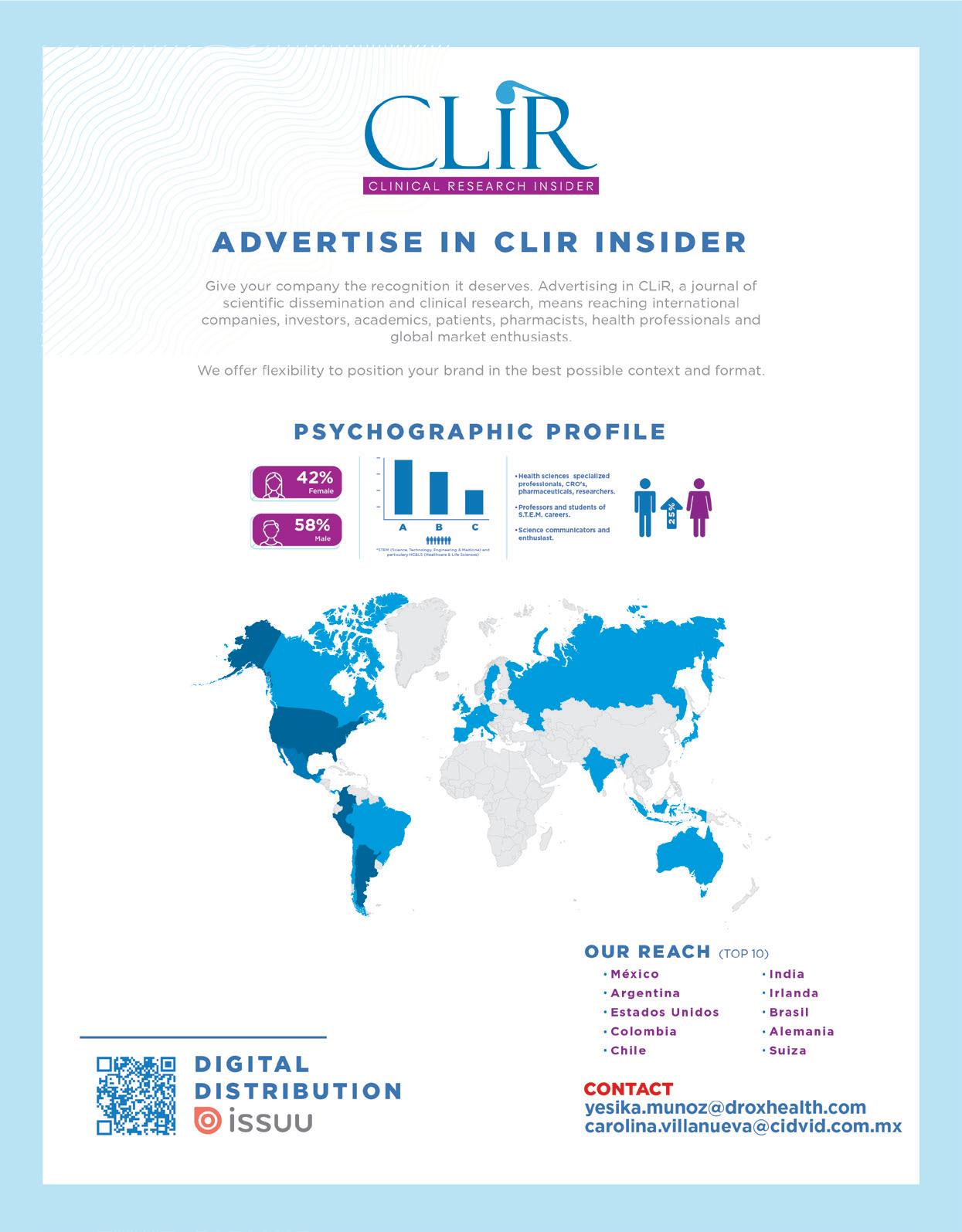
YEAR 3, NO.8, 2022
STAFF DIRECTORY
Marco
Cid
Fabián
Valdés Calleja
GENERAL DIRECTOR DIRECTOR
Ivette
Venegas
Yesika S. Muñoz
Vanessa L. Garduza
EDITORIAL COLLABORATORS
Carolina
Villanueva
EDITOR IN CHIEF STYLE EDITING
Pavel
Moreno
EXECUTIVE DIRECTOR COMMERCIAL TRANSLATOR
César
Pérez
Marco A. Cid
Carmen de la Rocha
Claudia Mejía Morales
Wendy López Romero
Alfredo Torres
Dante Alducin
Laura Velásquez Herrera
Lenin Pavón Romero
José Luis Maldonado García
Mario Alberto Flores Valdez
Josué Bautista Arteaga
Ana Villaseñor-Todd
Callie Seaman
Mafer Arboleda
Mauro Orozco
Orígenes Romero
Rossana Camarena
Rick Ruiz-Dana
3
HEROES THE NEW
STYLE
GRAPHIC DESIGN ARTEMIS
EDITING
DIRECTION FINANCE
Pág.
CENTRAL RESEARCH
Pág.
00 EDITORIAL
A new opportunity Carolina Villanueva
06 Pág.
LATEST NEWS
A motion sensor attached to the skin could detect concussions
Gene therapy demonstrates efficacy in the treatment of hemophilia

Carmen de la Rocha, PhD
Nanopharmaceuticals attacking atherosclerosis
Claudia Mejía Morales, PhD
Portable and comfortable devices to detect COVID-19 are developed
Regeneration on a chip
Wendy López Romero, PhD
Mental health and COVID-19: The pandemic we are facing now and over the following years
Dr. Lenin Pavón Romero & Dr. José Luis Maldonado García
Challenges in clinical research of vaccines for emerging and re-emerging diseases
Mario Alberto Flores Valdez, PhD
26 35
BUSINESS & DEVELOPMENT
End of Alopecia? FDA Approves Drug for Alopecia Areata




Early detection of pancreatic cancer

Claudia Mejía Morales, PhD
The shares of the pharmaceutical AMYLYX soar after the approval of ALBRIOZA
Carmen de la Rocha, PhD
Dostarlimab: Immune cell switch that fights rectal cancer



Wendy López Romero, PhD
56 Pág.
RANK-CLIR
Best Pharmaceutical Stocks, Ranking 2022
58
CLINICAL RESEARCH AND PHARMACOLOGY
Pharmacovigilance Systems in Latin America for COVID-19 Vaccines: Brazil, Chile, Costa Rica, and Mexico
Josué Bautista Arteaga, QFI


62
GADGETS
Health and video games: truths, lies, and nuances

Mauro Orozco Moreno
64
The Children of the Stars
Marco A. Cid, MBA
THE EXPERT’S OPINION
The importance of recovering selfsufficiency in the production of vaccines in Mexico
Dr. Alfredo Torres
This is how the world ends
QFB. Dante Alducin
DIRECTOR’S OPINION INTERVIEW
America is Innovation; Colombian company develops a sophisticated algorithm for the early detection of diseases
Laura Velásquez Herrera
SCIENCE TODAY
Fatty liver, the beginning of the end
Dra. Ana Villaseñor-Todd

42 47
LET’S TALK ABOUT CANNABIS
Cannabis and viruses, the whole picture! Callie Seaman, PhD
Medical cannabis and COVID-19; What is their relationship, and why have they been linked?

Dra. Mafer Arboleda
BETWEEN ART AND SCIENCE
What now? Orígenes Romero Porras
66
CLIR CROSSWORD
Carmen de la Rocha, PhD
67
LITERARY KALEIDOSCOPE
“Nothing”
Rossana Camarena
68
CLIRTOON
Rick Ruiz-Dana
4
16 21 OUR CONTENT
Pág. Pág. Pág. Pág. Pág. Pág. Pág. Pág. Pág.
Pág. Pág. Pág.
14
CLIR Clinical Research Insider magazine, year 3, no. 8, July-August 2022, is a trademark of MEDICAL RESEARCH FOR SCIENTIFIC PROPOUSES, DROX Health Science. / INVESTIGACION BIOMEDICA PARA EL DESARROLLO DE FARMACOS. Title registered with the United States Patent and Trademark Office, registration no. 6,435,380. All rights reserved. CLIR is a bimonthly publication, published in Volcan Popocatepetl no. 4571, C. P. 45070 Zapopan, Jalisco, Mexico. Contact. Telephone: 33 24 55 21 89. Editor in Chief: Carolina Villanueva. E-mail: carolina.villanueva@droxhealth.com. Reservation of Exclusive Use Rights: in process. ISSN: in process before the Instituto Nacional del Derecho de Autor. The content of articles and advertising is the responsibility of their authors and sponsors. CLIR Clinical Research Insider is not responsible for the information in the advertising content. Prices shown in this publication are for informational purposes only and are subject to change.
5
advisors: yesika.munoz@droxhealth.com / 33 16 95 59 95 vanessa.garduza@droxhealth.com / 33 31 57 27 33
YOUR COMPANY ON CLIR! ADVERTISE Sponsorship
A
opportunity
-Alejandro Dolina
In medical terms, it is called innate immunity to the natural protection or defense barrier with which each individual is born. It serves to recognize foreign elements and protect us from potentially harmful agents. It is one of the first gifts that Nature gives us, protection. However, our inherent organic condition leads us to exposure to pathogens, predators, and threats, both natural and cultural, that put our integrity at continuous risk; it is a cyclical process where one of the agents overlaps the other.
The COVID-19 pandemic is possibly the most cathartic event that humanity
has suffered so far in the twentieth century, as it has put at risk that security of which we were not so aware.
On the other hand, while various industries had the opportunity to take a break and resurface, others had to transform the way they carried out their processes radically. In this context, the scientific environment has been saddled with moral responsibility and the need for innovation to sustain itself and the overdemand of its knowledge and safeguard the human species today more than ever. Therefore, in this new stage of the CLIR project, with DROX
6
new
Editorial No. 8
The wise man knows he is going to die, but he lives and resists death as much as he can.
“ “
Health Science , we reach the next level, paying tribute to all those work and health industry agents who have shown that survival lies in the deep love of life, vigorous research, and teamwork.

The COVID-19 pandemic has opened the window to show us that health research is indispensable to survive biological contingencies and that the Latin American scenario has the potential to lead to a medical-industrial superpower if the optimal link between key agents is made. In this new opportunity, we combine knowledge for the common benefit; at Clinical Research Insider, we create an
ecosystem of valuable information to bring into your hands. We are sure that disseminating science is the first step to consolidating our permanence as a species.
More than two years after the beginning of our pandemic, we thank each individual involved in building the future landscape. It remains only to praise the extraordinary nobility of the scientific and medical community because working at rates in which human strength is challenged, with the skill of going beyond the predictable, they have generated new knowledge and, in short, have given us a unique opportunity.
7
A motion sensor attached to the skin
could detect concussions
8 LATEST NEWS
Chronic traumatic encephalopathy (CTE) is a progressive degenerative brain disease, a consequence of multiple concussions and brain injuries, which results in gradual deterioration and loss of brain mass, accompanied by decreased memory, self-control, and focus, as well as suicidal thoughts, depression, anxiety, violence, dementia, among others. These injuries occur because of physical contact and sudden head movements, causing the brain to move from back to front and hit.
Last June, researchers at Michigan State University published the development of a patch that adheres to the neck of athletes, which strains tension and compression from that part of the body, generating an electrical signal that will be interpreted as kinematic marks experienced by the human brain. This device has the potential to quantify athletes’ exposure to these “risk movements,” which may prevent CTE, as well as help form a parameter that is considered safe in terms of the number of athletes’ exposures.
CTE is mainly experienced in contact sports; it is estimated that in the United States, about 20% of concussions are due to sports and that 99% of NFL players develop CTE. Recently, direct contact has been measured by accelerometers attached to the helmets of athletes, with the limitation that they are not in direct contact with the athlete’s head and that not all contact sports use helmets.
Courtesy: taken from Dsouza, H., 2022
Sources: 1. 2.
Dsouza H, Pastrana J, Figueroa J, Gonzalez-Afanador I, Davila-Montero BM, Sepúlveda N. Flexible, self-powered sensors for estimating human head kinematics relevant to concussions. Sci Rep 2022; 12:1–8. https:// doi.org/10.1038/s41598-022-12266-6.
Ogasa N. A neck patch for athletes could help detect concussions early. Sci News 2022.
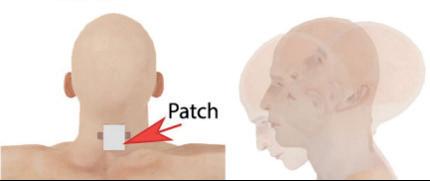
9 LATEST NEWS
Writing by PhD
Carmen de la Rocha,
Director of Research and Development at Drox Health Science. PhD in Biotechnology, Master in Biochemical Engineering. More than eleven years of experience in clinical research and basic science with 8 publications in indexed international journals. Member of the National System of Researchers, level I.

Gene therapy demonstrates efficacy in the treatment of hemophilia

Hemophilia A is an inherited bleeding disorder caused by a lack of blood clotting factor VIII. It occurs due to an error in a gene located on the X chromosome (therefore, it is more frequent in males since they only have one copy of this chromosome), which codes for the coagulation factor, translating into a lack of it, decreasing the ability to form blood clots showing inability to stop bleeding.
Recently the prestigious New England Journal of Medicine published the results of a Phase III study, in which the gene therapy called “Valoctogene roxaparvovec” was tested based on a vector in a type of adenovirus that contains the DNA fraction of the factor VIII gene.
This therapy has already been tested in Phase I and II studies, showing promising results. At the time of Phase III, 134 patients received the drug through an infusion (single dose). The results showed a significant increase in the production of endogenous factor VIII and a reduction in bleeding 52 weeks after receiving the treatment.
10
LATEST NEWS
To date, treatment for hemophilia consists of supplementing recombinant clotting factors (synthesized in the laboratory) periodically, as well as using other chemicals that stimulate the release of the factor or prevent clots from breaking down. Gene therapy could represent an effective treatment alternative in the very long term, thus avoiding the need for exogenous replacement treatments. We will have to wait to know the limitations of this drug in terms of activity time in the body.
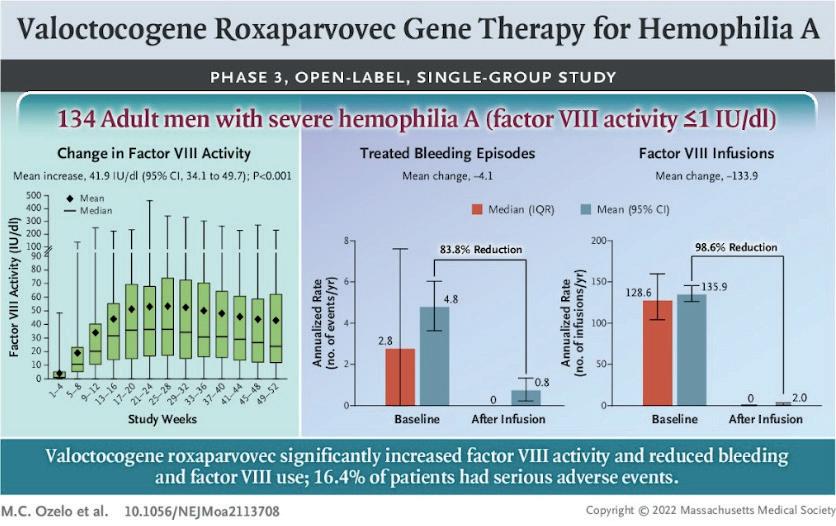
Sources:
CDC. Hemofilia. HHSGov – Dep Salud y Serv Humanos GobiernoUSAGov 2020. Ozelo M, Mahlangu
A. N Engl J Med 2022;386:1013–25. https://doi.org/DOI: 10.1056/NEJMoa2113708.
11
Courtesy: taken from Ozelo 2022
LATEST NEWS
J, Pasi J, Giermasz A, Leavitt A, Laffan M, et al. Valoctocogene Roxaparvovec Gene Therapy for Hemophilia
1.
2.
Nanopharmaceuticals attacking atherosclerosis
Many drugs have low solubility, stability, and a short biological half-life, which limits their clinical application or contributes to the increase in adverse effects. Nanodrugs have emerged to improve their bioavailability and controlled release, with a size below 1000 nm. Nanopharmaceuticals can be in the form of liposomes, polymeric micelles, microemulsions, and nanoemulsions, among others, contributing to the transfer of the drug to the site of therapeutic interest. According to market segmentation, the creation of these nanodrugs has increased in therapies for cancer, autoimmune treatments, and inflammation.
Atherosclerosis, a condition involving the accumulation of fats, cholesterol, and other substances within the arteries, could be treated through nanopharmaceuticals. Generally, this condition is treated with hydroxypropyl-beta-cyclodextrin (CD), an FDA-approved drug that allows capturing, solubilizing, and administering lipophilic drugs, in addition to dissolving cholesterol crystals and decreasing the size of the atherosclerotic plaque; however, CD has low retention time, which means that high doses are required for successful therapy.
Researchers at the Baker Heart and Diabetes Institute created nanoparticles from airborne poly butyl-cyanoacrylate (with diameters of 388 ± 34 nm), loaded with CDs. This synergy between the nanoparticle and the drug and activated by ultrasound allows the significant reduction of cholesterol content effectively in murine cells, unlike the administration of CD alone. Thus, this nanodrug represents a potential application in patients with atherosclerosis.
12
LATEST NEWS
Figure: Theranostic nanoparticles (NPs) synthesized with n-butylcyanoacrylate (BCA). Courtesy: https://onlinelibrary.wiley.com/doi/10.1002/smll.202200967.
Sources:
Li, Z., Zhao, T., Li, J., Yu, Q., Feng, Y., Xie, Y., & Sun, P. (2022). Nanomedicine Based on Natural Products: Improving Clinical Application Potential. Journal of Nanomaterials, 2022. Mehta, S., Bongcaron, V., Nguyen, T. K., Jirwanka, Y., Maluenda, A., Walsh, A. P., ... & Peter, K. (2022). An Ultrasound‐Responsive Theranostic Cyclodextrin‐Loaded Nanoparticle for Multimodal Imaging and Therapy for Atherosclerosis. Small, 2200967.
 Writing by PhD
Claudia Mejía Morales,
Writing by PhD
Claudia Mejía Morales,
Research and Development Analyst at Drox Health Science. Ph.D in Biosystematics, Ecology and Management of Natural and Agricultural Resources, with orientation in Biotic Products; Master in Environmental Sciences, with orientation in Environmental Technology. With 10 publications in national and international indexed journals.

13 LATEST NEWS
1.
2.
Portable and comfortable devices to detect COVID-19 are developed
Currently, one of the tests mainly used to suppose an infection by COVID-19 is based on the detection of the presence of IgM and IgG antibodies anti-SARS-CoV-2 in a sample of nasopharyngeal exudate. Despite being a fast and reliable method, patients often report discomfort and even pain at the time of sampling.
An alternative to this type of test has recently emerged: a sensor that integrates a patch with biodegradable porous microneedles (porous MNs) and a colloidal gold immunochromatographic assay (PMNIA). Unlike conventional rapid tests, it works with dermal interstitial fluid, a source of biomarker proteins of different infections, such as antibodies.
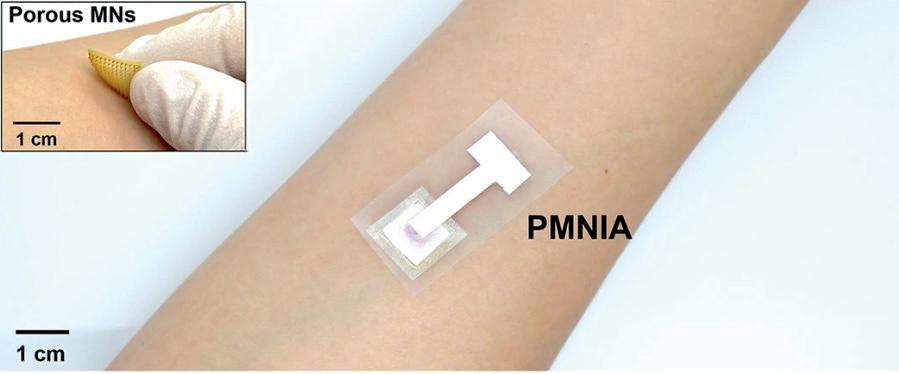
The porous microneedles of polylactic acid present in the patch extract the dermal interstitial fluid from the skin, which is transported by capillary effect and flows through micropores to the immunoassay biosensor, where simultaneously 2 to 7 nanograms of specific IgM and IgG anti-SARS-CoV-2 antibodies are detected respectively, in just 3 minutes by the appearance of a reddish line in the test area.
This diagnostic method for COVID-19 proposes a minimally invasive, painless, simple, and fast alternative that, unlike chromatographic antibody tests, does not require specialized personnel for sampling and, in addition, could be adapted in the future for the detection of other infectious diseases.
Courtesy: https://www.nature.com/articles/s41598-022-14725-6/figures/1
14
LATEST NEWS
Source: Bao, L., Park, J., Qin, B., & Kim, B. (2022). Anti-SARS-CoV-2 IgM/IgG antibodies detection using a patch sensor containing porous microneedles and a paper-based immunoassay. Scientific Reports, 12(1), 1-16.
Regeneration on a chip
About two million deaths per year are caused by liver disease. The liver can regenerate when mature hepatocytes (the type of primary cell found in the liver) divide; however, although this process is well studied and characterized in rodents, it has not yet been explored in humans.
In a study recently published in the journal Proceedings of the National Academy of Sciences by a group of researchers led by Dr. Arnav Chhabra of the Massachusetts Institute of Technology, a three-dimensional (3D) “regeneration on a chip” model called structurally vascularized liver sets was presented to analyze regeneration (SHEAR), which is used to model multiple aspects of human liver regeneration.
SHEAR allows the control of hemodynamic alterations to mimic those that occur during injury and regeneration of the liver; supports the delivery of biochemical inputs, such as growth factors (cytokines) and paracrine interactions with endothelial cells between blood vessels and hepatic spheroids.

In their published results, the authors comment that stimulation with relevant cytokines amplified the secretory response and induced the entry into the cell cycle of primary human hepatocytes (PHH) integrated into the device. In addition, they identified endothelium-derived mediators that are sufficient to initiate PHH proliferation in this environment. Altogether, the data presented here underscore the importance of multicellular models that can recapitulate high-level tissue functions and demonstrate that the SHEAR device can be used to discover and validate conditions that promote human liver regeneration.
This device could be used in patients suffering from chronic diseases such as viral hepatitis, fatty liver, or cancer. It could even be used to stimulate the growth of a transplanted liver.
Writing by PhD
Wendy López Romero,
Research and Development Analyst at Drox Health Science. PhD in Medical and Pharmaceutical Biotechnology, Master in Molecular Biology. More than six years of experience in molecular biology, Immunology, Biochemistry and Proteomic, as well as in the development and validation of medical devices, with five publications in indexed journals.

15 LATEST NEWS
Figure: Model of molecular interactions in SHEAR. Courtesy: Chhabra, A. et al.
Source: Chhabra, A., Song, H. H. G., Grzelak, K. A., Polacheck, W. J., Fleming, H. E., Chen, C. S., & Bhatia, S. N. (2022). A vascularized model of the human liver mimics regenerative responses. Proceedings of the National Academy of Sciences, 119(28), e2115867119.
THE
CHILDREN OF THE STARS
Marco Cid

CEO DROX Health Science – CLIR General Manager
Chemist-pharmacist Biologist from La Salle University, MBA from ITESO, postgraduate degree in Clinical Research from York College and Senior Management from IPADE InnovAD Program. Expert in drug research and development; entrepreneur, founder of several for-profit and non profit associations and developer of a private equity investment company.
16
OPINION OF THE DIRECTOR
¡…And we are back!
In its written version is one more chapter of this incredible project, Clinical Research Insider . They have been difficult moments after the pandemic, where we have had to make forceful decisions to continue the Journal and the CLIR Congress, both of these are great projects. Pandemics, in addition to bringing adversity and deaths, many of them from people close to us, also get opportunities in a myriad of areas, from scientific advancement to the opening of new businesses or modifications in the trajectory of humanity. Pandemics, whether induced (as many believe, as they appear precisely every 100 years) or generated by variables within nature, have marked the course of humanity since their inception.
As far as we are concerned, science was marked by the accelerated development of multiple vaccines and various drugs with potential efficacy against SARS-CoV-2. Humanity understood the importance of developing highly specialized medicines, whether generated by living organisms
or in the laboratory, against present and future diseases. It was a moment that will not be repeated; the pandemic catalyzed for collective human consciousness to understand the capacities and limitations of human knowledge.
Research and science will accompany humanity forever, and they will be better understood and applied. That is why CLIR continues to strive in the part that corresponds to it, the scientific dissemination among all who want to learn more about this fascinating world.
We are called to survival because it has been shown that we can develop solutions to immediate problems through our wellknown scientific method, supported by the deductive or inductive analyses of our way of perceiving the universe. These are potent tools that will help us conquer the Cosmos!
The future is promising and very challenging! We will continue to be part of this great struggle for universal knowledge. The future awaits us on Earth as well as in the stars.
17
OPINION OF THE DIRECTOR
THIS IS HOW THE EXPERT’S OPINION
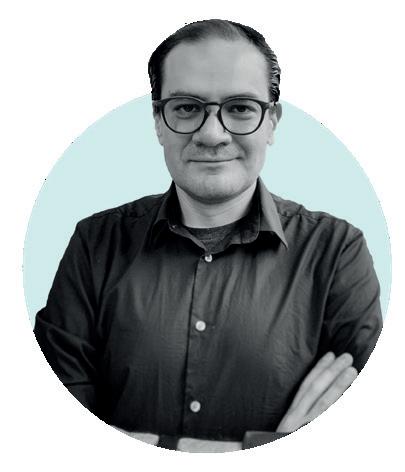
Dante
18
QFBwithaSpecializationinLeadingPeopleandTeamsprogrambythe UniversityofMichigan.Hehas12yearsofexperienceinClinicalResearch. FounderofBlast!AcademyandhostofthepodcastRuidoBlast!
THE WORLD ENDS Alducin
Along time ago, when I was still little, I don’t remember exactly how my older brother collided head-on with a car, and a faulty seat belt allowed it to hit me on the dashboard. The result: a deviated nose septum has been with me ever since. At fifteen, my dog threw me on the edge of a marble step, and you can still see the scar today. At twentyfour, my thyroid was burned with radioactive iodine because it had gone crazy. At thirty-one, I injured my knee in a downright stupid accident. And probably, if I did a more exhaustive count, I would find more scars to add to the list.
All these scars have something in common, they are tangible. Most can be touched, and all can be seen in one way or another. However, after this pandemic, all of us would have to count one more scar to whatever we carry: the scar of the pandemic. This type of scar is much more complex than we may think; it made us question our purpose in life and made us realize that no matter how much we
like to evade at work, hedonism, or wherever we like the most, in the end, we all have the same fate: death. This pandemic showed that people abhor confinement because while alone, they cannot help but ask themselves the big questions and see how they have made the wrong decisions in many cases.
One way or another, we’ve all been through the same thing: I see that I’m going to die, I realize that I’m fragile and that many of the decisions I’ve made don’t make me happy or a better person. How many people do you know who realized they are lousy parents? How many realized that their marriage is a farce? And some discover that their life work is meaningless, that they are empty from more yoga, religion, fitness, and rescued puppies that occupy their day. If you don’t believe me, remember the “big resignation” and check out the statistics on divorces, suicides, and domestic violence.
It’s as T.S. Elliot pointed out in his poem. “The Hollow Men”:
I won’t say whether this pandemic was good or bad because it’s an amoral, cyclical phenomenon that had happened even before our ancestors slept on tree branches. But if there is anything positive in all of these, it is a profound reflection on who we are and our priorities. Seeing the invisible scars left us working to have a more harmonious life, being consistent with ourselves, liking ourselves before others, and
having the courage to live to do what we are truly meant to do in this life.
If we lived this way, we would truly value the brief time we have been given in this world. Our invisible scars would make us much stronger, and the next time “the old grim reaper” looks us in the eye, we would have the serenity to return a smile full of satisfaction.
19
‘…This is the way the world ends Not with a bang but with a whimper.’
THE EXPERT’S OPINION
THE IMPORTANCE OF
RECOVERING SELF-SUFFICIENCY
IN THE PRODUCTION OF VACCINES IN MEXICO
“THE COVID-19 PANDEMIC IN MEXICO HAS SHOWN THAT DEPENDENCE ON TRANSNATIONAL COMPANIES TO OBTAIN VACCINES IS A MATTER OF VULNERABILITY AND MUST BE HANDLED AS A MATTER OF NATIONAL SECURITY”

20
PhD, MS
Distinguished Professor of Microbiology and Immunology at the University of Texas (UTMB Health). Founder and current coordinator of the Latin American Coalition for Escherichia coli Research.
THE EXPERT’S OPINION
Alfredo G. Torres
An unprecedented pandemic, the scientific community increasing its efforts to develop vaccines to combat the SARS-CoV-2 virus, and the collaboration of governments and pharmaceutical companies to produce and distribute vaccines that will help the world population to survive the infection and to try stopping the spread of the virus. But what happens when a country does not have the capacity to develop or produce its own vaccines? That country becomes dependent on the availability and distribution of vaccines established by world health organizations and pharmaceutical companies.
But at what point did Mexico lose the ability to produce its own vaccines? Historically, the country produced biologicals that were essential for the eradication of smallpox in 1951, and the elimination of polio and diphtheria in the early 1990s. The advances in the development of biologicals and vaccines in Mexico gave rise to the establishment of the Biologicals and Reactives Laboratories of Mexico, S.A. de C.V. (BIRMEX) in 1999, which aimed to propose association schemes and strategic alliances between the federal government and pharmaceutical companies to produce and market biologicals and medical supplies for the benefit of Mexicans. But for different reasons, the country lost its self-sufficiency in the production of vaccines in the year 2000 and from that date, all vaccines are imported.
Even after the H1N1 influenza pandemic that appeared in 2009, where the first human case originated in Mexico, the country decided to face this global situation, with decisions and actions established in the National Pandemic Influenza Plan, which allowed the government and its secretary of health to control the first epidemic wave of the 21st century in the country. But this pandemic experience was not stimulating enough for Mexico to restart its
ability to produce its own biologics and vaccines.
The COVID-19 pandemic finally demonstrated the great vulnerability to which the Mexican population is exposed by depending on foreign companies to obtain vaccines, which caused the National Council for Science and Technology (Conacyt) to invest in the development of vaccines in the national territory, resulting in the acquisition of the technology to evaluate in clinical studies the first national vaccine known as “Patria”. The financial investment that is being made to evaluate the efficacy and safety of this vaccine, with its subsequent possible approval and use in Mexicans, opens the possibility that, if this is successful, other vaccines can be tested and approved in Mexico.
But not only the acquisition of technology is the way to recover the autonomy in vaccines, but a space is also required where these vaccine platforms can be developed and because of this urgent need, in June 2022, the National Polytechnic Institute (IPN) and Conacyt inaugurated the first National Laboratory of Vaccinology and Tropical Viruses in the country. In addition, the IPN also recently announced the creation of the first postgraduate degree in Science and Technology of Vaccines and Biotherapeutics, which allows the training of specialized human resources in vaccines, while reestablishing the infrastructure to develop, evaluate and possibly approve future Mexican vaccines.
But like any national policy, there is a risk that, with a change of government, these efforts will be reversed, and this will result in a change in science and technology policy in the country, so it is important that the development of vaccines be consider it as a national security issue, which would allow continuity in the reactivation of this essential activity for national sovereignty.
21
THE EXPERT’S OPINION
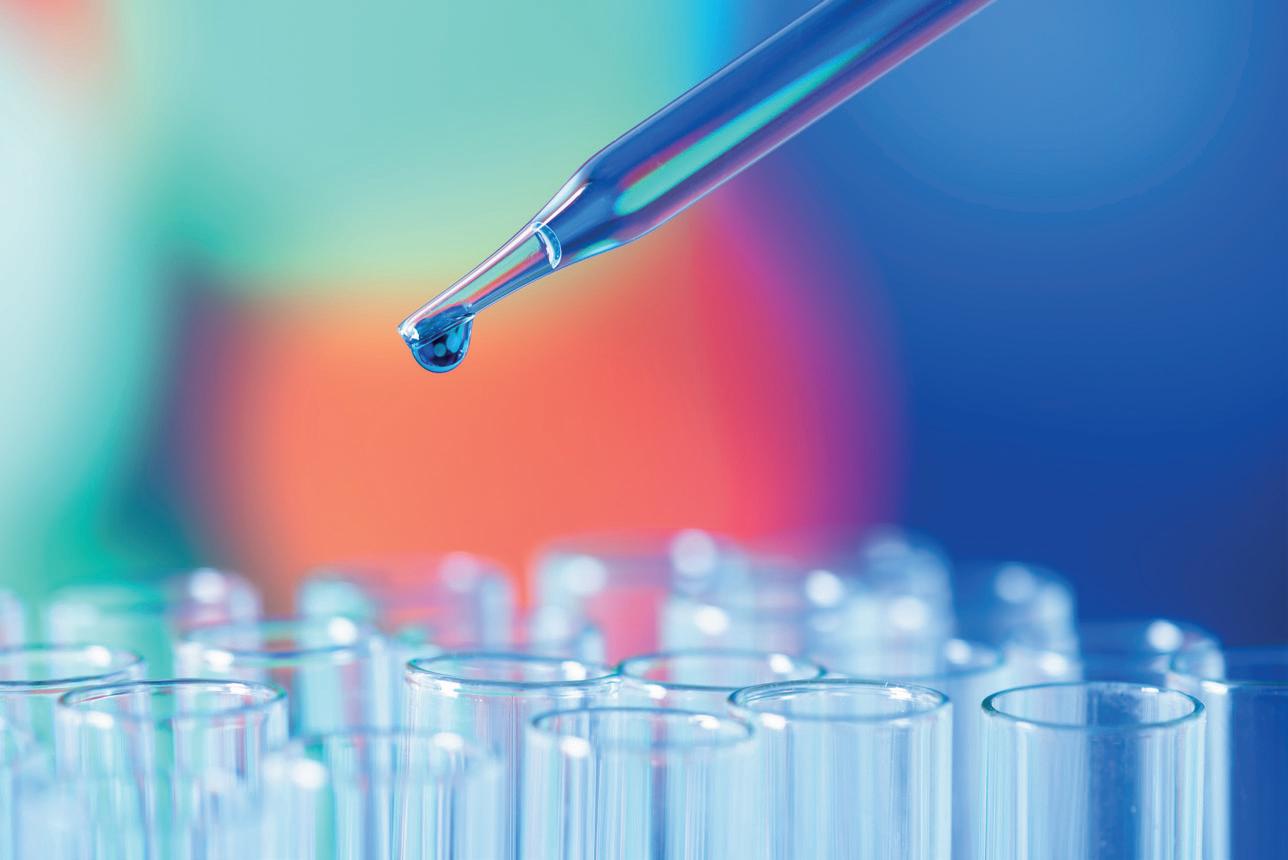
22
Interview to Laura Velásquez Herrera

America is Innovation; Colombian company develops a sophisticated algorithm for the early detection of diseases
Early diagnosis of various diseases potentially decreases their mortality rate by increasing the chances of success of their treatments; in addition, it increases the quality of life of patients and the economy of the population in which they reside. Currently, in Latin America, we work with technology based on Artificial Intelligence for the early detection of certain diseases that afflict thousands of people around the world. Therefore, on this occasion, we invite Laura Velásquez Herrera, president and co-founder of Arkangel AI, who shares with us the development and impact of her platform and its potential influence on more technologies used for healthcare.
is?
«Arkangel AI is a platform that automatically transforms medical data into predictive models; these types of data can be images, tabulated data,
voice, video, or any other kind. It is an Ai as a service platform, where any company in the health sector, from pharmaceuticals, insurers, hospitals, laboratories, etc., can access the power that artificial intelligence brings without needing to know about data science
23
Dear Laura Velásquez, could you explain what Arkangel AI
INTERVIEW
or artificial intelligence itself. We have currently developed predictive models to make early detection of diseases such as leukemia, other types of cancer, and respiratory diseases, among others. However, we are also developing models to identify potential claims or high-cost accounts for an insurer, know if there is clinical deterioration in a hospital, or create models to increase access to treatments for pharmaceutical companies, etc.
In short, we transform that data into AI models to make it a digital asset for companies. We take care of the whole process by having an obvious problem you want to solve. Today we focus a lot on the early detection of diseases, but it can be used for many possibilities and challenges in the health system.»
In simple terms, how does the algorithm they use work?
«It is straightforward, if an IPS (hospital), an insurer, a pharmaceutical or a laboratory, even in government stays, have a problem within their processes in any area of the
institution, or want to optimize or automate a process, AI could be implemented. What we do is understand what that problem is, see how it is currently solved, and from there, we analyze what kind of data is required. Once we have that data, it is entered into our platform and automatically starts with the algorithm’s training. When it is ready, the system notifies you through an alert email that has already been created for review, where you see the accu-racy metrics, which we seek always to be higher than 90%, and from there to be able to deploy it in the institutions’ systems to start using it in the field.»
What kind of diseases can Arkangel AI detect?
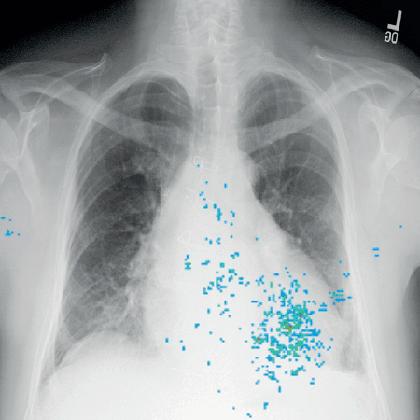
«Let’s say it depends on the predictive models that institutions want to create; today, we have made predictive models for more than 19 respiratory pathologies, we are doing for colon and lung cancer, we have already done one with UNICEF of leukemia in children, also for malaria and hospital clinical deterioration, that is, what probability there is that a patient who arrives at the emergency room may require hospitalization or transfer to an intensive care unit and even what mortality rate exists in that patient so that doctors can take better decisions in real-time, and so on.»
Can it be categorized as a personalized process?
«Yes, it is at the same time a customizable and scalable process; each institution has its challenges, and we want them to be able to implement this technology to benefit patients and institutions simultaneously.»
24 INTERVIEW
Figura: Detección de patología de rayos X de tórax. Cortesía: Arkangel AI.
So far, where has this technology been implemented?
«Today, we have alliances in the United States, England, Spain, and Colombia, with allies who can deploy our technology in their countries and create new models for their challenges. We currently work with different health institutions such as pharmaceutical companies, insurance companies, hospitals, and large health organizations worldwide such as UNICEF, AstraZeneca, Novartis, Boston Scientific, Abbott, AWS, and Fundación Santa Fe de Bogotá, among others.»
What are your goals in 2022?
«Our goal is to be able to close 1.5 million dollars this year, but more than that, our goal is to impact millions of lives with that amount, as well as to go deeper into England and Spain, which are one of our focuses taking advantage of the current alliances we already have, and in the same way optimize 100% in Colombia and generate strategies for Mexico with some allies with whom we are touching base.»
What has been the human and economic investment force of the project?
«We have raised about a million dollars of non-participatory investment; in this industry, when you are focused on the clinical, you must have too much clinical and scientific validation that confirms that what you are creating has value. We have been around three years, we have already validated the technology from the clinical and scientific point of view, and we have already started sales.»

How could data intelligence help us cope with a future health contingency?
«Data intelligence could help us on every front the healthcare system faces today, from interoperability and administrative processes to molecule development in record time or early identification processes. I think it’s a tool that gives us agility when making decisions. To give an example, if you ask someone in the health system what the most important challenge is, I would probably say that knowing when one of us might develop a chronic or highcost disease for the system; with data intelligence and through risk factors, we can identify who may develop a chronic disease in the future, the same can be replicated with the next pandemic. »
We know that in 2020 Arkangel IA won the Everis Global Award, in which more than 2,200 national and international projects from the health, biotechnology, and related industries participated; therefore, you could share with us what distinguishes Arkangel IA from other technologies used for the detection of diseases?
25
INTERVIEW
«There are many companies that work with their predictive models, but we provide the service for institutions to create their own models for what they need automatically without knowing how to develop this technology. This brings ease and speed when implementing these technologies within their own companies. Second, we work with basic installed capacities and infrastructure at a fraction of the cost. Normally any institution that makes predictive models for certain diseases focuses only on the creation of the algorithm. »
According to your experience in scientific research and development, coupled with your business career, what strategies should be implemented in Latin America to strengthen scientific and technological education?

«There are many, but the main one would be connecting all the public spaces with the private ones and the academy. I think that by uniting the three entities and generating value from a sandbox, for example, interesting things could arise.»
What advice could you give to those immersed in scientific research to undertake new business models in the health sector?
«First, don’t just stay in research, but focus on how that research generates value. Because in the end, if a paper comes out,
26
it will be beneficial for scientists and fill us with more science, but it will not be applied, then I invite you to understand what is the real problem that can be solved and to investigate what can really be executed and generate value out there of the paper.»
«I believe 100% that humanity is not lost before it optimizes it. What allows this type of process is that doctors have more time to attend to the patient as it should; for example, in a medical consultation, 70% of the time is left filling administrative processes, but with these technologies, you can optimize the time of attention to the patient, not only do a biological checkup but as it was done before that also analyzed their behavior, their day to day, their habits, how they live, something that was done before and generated too much value.

What I want to tell you is that data intelligence and other technologies are what allow us to transform how we provide and access health today and in which we connect to generate a differential value that allows us to make decisions in an informed and more human way. The most beautiful thing about this type of technology is that the access gap between poor and rich countries can be reduced because today, half of the world’s population does not have access to health.
Finally, I would like you to address a topic of utmost importance, and that is entirely the responsibility of your company, and that is that because of the digitalization pro-cess that the sectors of the various industries have suffered as a result of the imminent modernization, and also clearly due to the COVID-19 pandemic, what lines do you recommend following so as not to lose humanity amid the incredible robotization of processes?
Therefore, the union of data science and the human allows for more human and close attention that helps move the system.»
Interview generated by Editorial
CLIR Clinical Research Insider
27
ENTREVISTA
Figura: Detección de retinopatía diabética. Cortesía: Arkangel AI
THE PANDEMIC WE ARE FACING NOW AND OVER THE FOLLOWING YEARS
Surgeon graduated from the Faculty of Medicine of UNAM and Master in Immunology from the ENCB of IPN. Undergraduate and postgraduate professor at the Faculty of Medicine at UNAM and a scientific reviewer at Wolters Kluwer. Director of the Department of Research in Neuroimmunoendocrinology and an honorary Mexican Council of Neurosciences member.

Doctor of Science specialized in studying neuroendocrine-immunological interactions in infectious diseases and psychiatric conditions. Member of the SNI level 3, author of COVID-19. Virología, inmunología, clínica y aproximación diagnóstica y terapéutica published by Wolters Kluwer. He is a member of the Mexican Society of Immunology (SMI) and member of the Society for Neuroscience (SFN).

28
MENTAL HEALTH AND COVID-19:
Dr. José Luis Maldonado
CENTRAL RESEARCH
Dr. Lenin Pavón Romero
Post-COVID-19 syndrome is the persistence of clinical signs and symptoms that appear during or after suffering COVID-19 and that remain for more than 12 weeks and have no association with concomitant conditions. Symptoms are consistent and present as flare-ups or fluctuations. These symptoms are independent of the infection’s severity and are estimated to occur in approximately 10 to 36% of COVID-19 survivors. The most frequent symptoms are fatigue, dyspnea, attention, concentration, and memory problems, as well as sleep disturbances, anxiety, and depression.
More studies worldwide show that at least 1 in 5 patients may develop neuropsychiatric problems within 90
days after infection. One of the first studies on these sequelae was conducted in Wuhan and published in the journal JAMA. The trial described that 36% of patients developed different neurological disorders post-infection. Following the same line, Brain published a study by the University of Oxford in which the trial described neurological disorders during hospitalization and after hospital discharge. A retrospective study published in the journal Lancet, evaluating 62,354 patients with COVID-19 in the United States, confirmed the conditions; the study proved the relationship between neuropsychiatric sequelae and infection.
Although it seems paradoxical at first glance, a brain infection is unnecessary to develop these neuropsychiatric disorders. The chronic inflammatory response can cause these conditions. It could also, among others, modify the functional

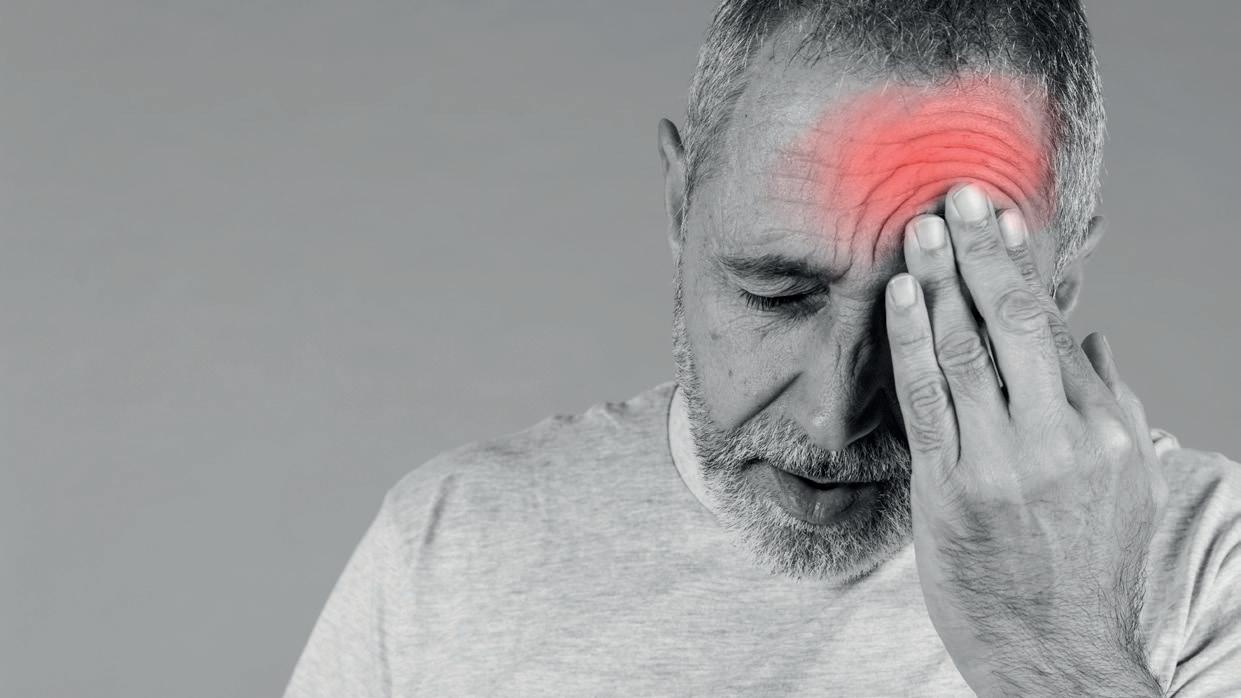
29 CENTRAL RESEARCH
permeability of the blood-brain barrier (a semipermeable cellular barrier that envelops the brain and spinal cord and regulates the passage of molecules to the brain), which is very sensitive to peripheral inflammatory changes. On the other hand, inflammatory molecules such as IFN-γ, IL-1, IL-6, and TNFinduce metabolic changes in the brain and the periphery, such as the inhibition of tetrahydrobiopterin, a critical cofactor for the synthesis of dopamine. When inhibited, dopamine concentration decreases; dopamine is an essential neurotransmitter for motor behavior, emotionality and affectivity, and neuroendocrine communication.
Another metabolic change is the activation of indolamine 2 3-dioxygenase in leukocytes and microglia; this results in decreased serotonin levels critical for regulating mood, emotions, appetite, and digestion; therefore, there is an increase in the synthesis of kinunerins, which has neurotoxic effects at increased
concentrations. Altogether, these changes in neurotransmitter levels trigger behavioral changes, anxiety, emotional flattening, and mood swings, among other psychiatric symptoms in the susceptible population.
Biological mechanisms triggering neuropsychiatric conditions have not yet been elucidated. As previously mentioned, these conditions could result from inflammatory alterations, autoimmune responses, and a sustained increase in the production of reactive oxygen species secondary to SARS-CoV-2 infection.
Because it might be responsible for the post-COVID psychiatric effects, one of the phenomena currently under investigation is residual inflammation in COVID-19 survivors. This inflammation is possibly caused by the persistence of the virus or by hematopoietic changes induced by infection. Such as those changes in emergency hemopoiesis secondary

30 CENTRAL RESEARCH
to viral infection, characterized by an increase in highly reactive exhausted T lymphocytes. Similarly, another source of inflammation is histological damage to organs like the heart, endothelium, kidney, and lung.
Recently it has been pointed out that hypocortisolism secondary to damage to the pituitary gland or the pituitary gland may be involved in the development of complications since cortisol regulates the inflammatory response, and low levels of this hormone increase the inflammatory response. Additionally, we must consider that the inflammatory response occurs when acute and chronic stressful events present. This inflammation is relevant because healthcare professionals are susceptible to developing psychiatric conditions due to the constant stress due to the care of patients and the fear of infecting themselves or their relatives; in the same way, individuals in isolation are subject to continuous stress due to confinement.
Another damage mechanism possibly involved in neuropsychiatric changes is autoantibodies induced by SARS-CoV-2 infection. Antibodies are circulating proteins that generate after disease to provide immunity. In some cases, antibodies directed against virus proteins can crossrecognize proteins expressed in their neurons and thus cause psychiatric conditions. There are some reports of similar neuropsychiatric problems induced by autoantibodies in the medical literature and are called “PANDAS” or autoimmune encephalitis.
A critical precedent is a SARS-CoV outbreak that affected China in 2002, where patients had high psychiatric morbidity with the presence of chronic fatigue that persisted
until at least four years after the outbreak despite presenting a physical improvement after the infection. Noteworthy, frontline healthcare workers who attended this outbreak showed even higher levels of stress, depression, anxiety, and post-traumatic stress symptoms than the infection survivors. According to a report by the World Health Organization, mental health has been significantly affected in several countries, not only by psychiatric problems but also by an increase in the consumption of alcoholic beverages and substance abuse, as a result of the social changes derived from the pandemic.
For all of the above, it is vital to generate innovative strategies in the field of public health to mitigate this problem. One of the ravages that COVID-19 has left is the mental health pandemic that has been worsening over the past months; it is necessary to continue researching and understanding the etiopathogenesis of post-COVID complications and to develop efficient strategies for prevention and treatment.
It is important to note that vaccines do not make us immune to infection and much less will prevent the onset of the aftermath of COVID-19. It has been reported that 10% of infected and vaccinated individuals have neuropsychiatric complications. Thus, prevention measures must be reinforced since the number of infected patients is constantly growing.
We thank Dr. Lissette García Mena for her contribution to the development of this paper.
31
CENTRAL RESEARCH
Recommended readings:
Mao L, Jin H, Wang M, Hu Y, Chen S, He Q, Chang J, Hong C, Zhou Y, Wang D, et al. Neurologic Manifestations of Hospitalized Patients with Coronavirus Disease 2019 in Wuhan, China. JAMA Neurol (2020) 77:683–690. doi:10.1001/jamaneurol.2020.1127
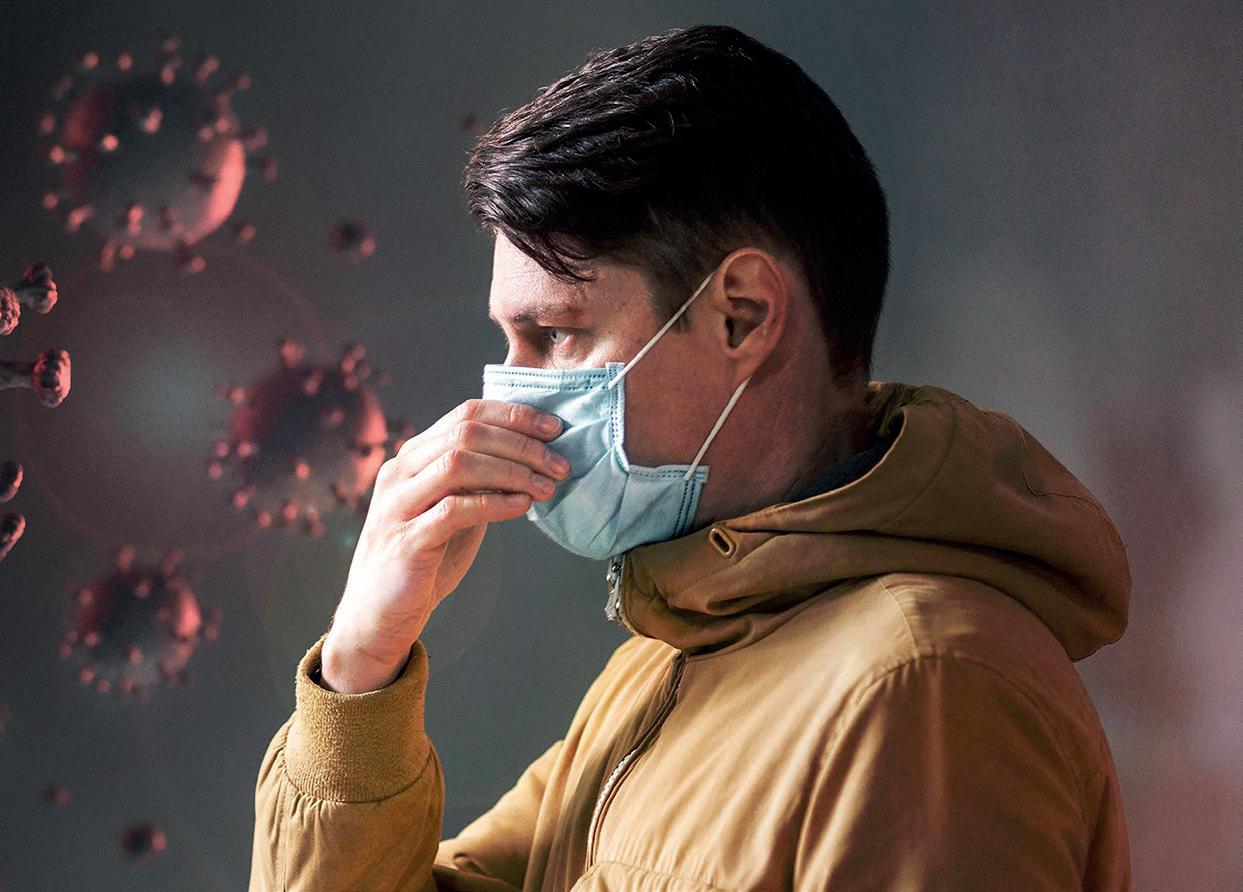
Paterson RW, Brown RL, Benjamin L, Nortley R, Wiethoff S, Bharucha T, Jayaseelan DL, Kumar G, Raftopoulos RE, Zambreanu L, et al. The emerging spectrum of COVID-19 neurology: clinical, radiological and laboratory findings. Brain (2020) 143:3104–3120. doi:10.1093/brain/ awaa240
Taquet M, Luciano S, Geddes JR, Harrison PJ. Bidirectional associations between COVID-19 and psychiatric disorder: retrospective cohort studies of 62 354 COVID-19 cases in the USA. The lancet Psychiatry (2020) 0366:1–11. doi:10.1016/S2215-0366(20)30462-4
Lee CH, Giuliani F. The Role of Inflammation in Depression and Fatigue. Front Immunol (2019) 10:1696. doi:10.3389/fimmu.2019.01696
Hunter D, Jamet Z, Groc L. Autoimmunity and NMDA receptor in brain disorders: Where do we stand? Neurobiol Dis (2020) 147:105161. doi: 10.1016/j.nbd.2020.105161
Mak IWC, Chu CM, Pan PC, Yiu MGC, Chan VL. Long-term psychiatric morbidities among SARS survivors. Gen Hosp Psychiatry (2009) 31:318–326. doi: 10.1016/j.genhosppsych.2009.03.001
Kuehn BM. Global Mental Health Services Are Collapsing as Demand Grows. JAMA (2020) 324:1933. doi:10.1001/jama.2020.22085
World Health Organisation. The impact of COVID-19 on mental, neurological and substance use services. (2020). Available at: https://www.who.int/publications/i/ item/978924012455
32 CENTRAL RESEARCH
1. 2. 3. 4. 5. 6. 7. 8.
Dr. Mario Alberto Flores Valdez

Senior Researcher C at CIATEJ, A.C. in Medical and Pharmaceutical Biotechnology. Doctor of Science with a specialty in Biochemistry from the UNAM. Research Member of the international network VALIDATE “Vaccine development for complex intracellular neglected pathogens.” Holder of a patent as inventor before the IMPI for the candidate for a new vaccine against tuberculosis.
Challenges in clinical research of vaccines for emerging and re-emerging diseases
The SARS-CoV-2/COVID-19 pandemic marked a milestone in the accelerated development and testing of vaccines against this disease. In the desire to control the damage derived from it, multiple candidates were developed and tested by different public and private entities, or by an association between them, in various countries, resorting to emergency assessments of the safety and efficacy properties (even if preliminary) of these biologicals.
Thanks to these efforts, it was possible to reduce the rate and number of people who unfortunately die because of COVID-19 and its complications. With this, various complications also became evident at a global level, including:
Access to new vaccines was not equitable for all countries.
Clinical trials tended to be concentrated in a few sites, which could have had an impact
33
RESEARCH
CENTRAL
• •
on having little information on safety and efficacy in genetically distinct or heterogeneous groups.
Vaccine manufacturing capacity was overwhelmed by the generated global demand.
Investment in new vaccine research continues to present an imbalance, with few countries leading and multiple without development or own tests.
Given these circumstances, it also became evident the need to pay greater attention to various emerging and re-emerging diseases and to consider the effects that multiple comorbidities may have on them (overweight, obesity, diabetes, malnutrition, among others).
To cite an example, tuberculosis (TB) remains the first historical cause of death caused by a single infectious agent worldwide since, in 2019, TB caused 1.4 million deaths and 10 million new cases.
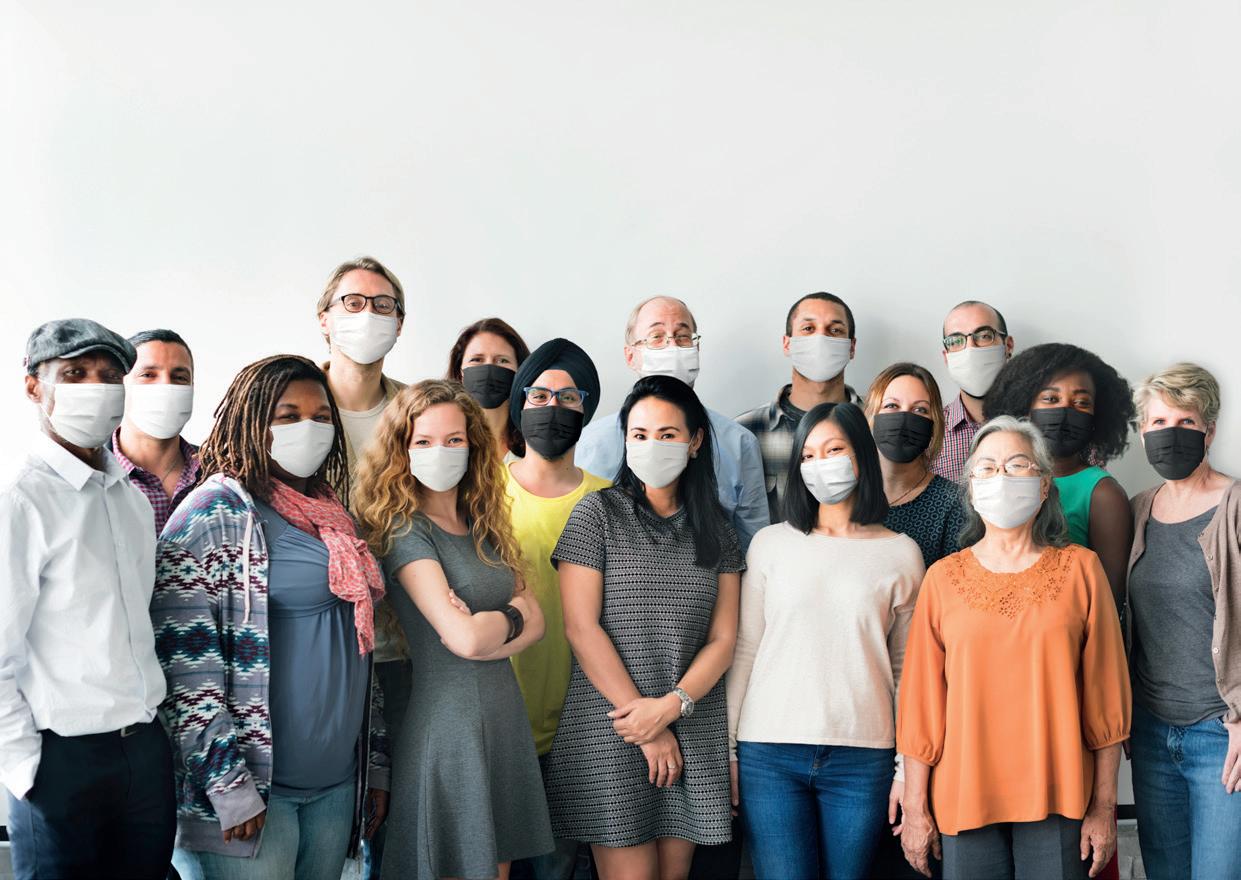
For this disease, a recent meta-analysis reported that patients with diabetes have a two- to five-fold higher risk of developing TB than patients without TB. Also, it is estimated that 16% of newly diagnosed TB cases occur with diabetes, and it is estimated that 4.1% of patients with diabetes will eventually develop TB.
Additionally, it is estimated that in 2021 there were 537 million people affected worldwide with diabetes, with a projection of 643 million by 2030 and up to 783 million cases by 2045. In that sense, in the case of comorbidity with TB, diabetes favors more severe clinical manifestations of TB than those in patients without this condition, including widespread lung damage, especially in chronic comorbidity.
Despite the above, the evaluation of new treatments, diagnostic methods, or preventive measures against TB in the context of diabetes still constitutes an area little explored, both internationally and nationally, without information available today on the efficacy of the
CENTRAL RESEARCH
• • •
protection of any new TB vaccine candidate in the context of diabetes, at the level of clinical studies. A recent trial on the new vaccine candidate, VPM1002, excluded people with diabetes in a Phase 2 safety and immunogenicity clinical study. The TB-diabetes duo is not the only one that deserves greater attention to reduce its catastrophic consequences. We still have lags concerning dengue, Zika, Chikungunya, and cancer, to name just a few more examples.
Facilitate the regulatory analysis by the entities in charge of the pharmacovigilance of vaccine candidates so that the relevant clinical studies can be carried out quickly and discard or modify what is essential to have a safe and effective vaccine in less time.
In that sense, it can be thought that some relevant points and challenges in the clinical research of vaccines for emerging and re-emerging diseases could be:
Include, as soon as they pass the safety tests, people with different risk factors for infections (obesity, overweight, diabetes, malnutrition, among others) in clinical studies to verify the safety of new vaccines.
Increase awareness of the need to invest in national research and development to speed response and reduce dependence on third parties.
Increase and be accurate during epidemiological surveillance to define which infectious agent is spreading, how often, and quickly.
Facilitate the transfer of biological samples containing the pathogens of interest between hospitals and health centers with the institutions dedicated to research to speed up the analysis of sequences that result in better and faster solutions (vaccines).
To facilitate clinical studies on the safety and efficacy of such vaccines to be conducted in genetically distinct or heterogeneous groups.
Favor the development of vaccines that are “friendly” with logistics, that is, give preference to those that can be transported at room temperature, refrigeration, freezing, and deep freezing, in descending order of priority.
Whenever this is not possible, improve supply and logistics chains to remote populations or where healthcare centers do not have deep-freezing equipment.
Undoubtedly, additional aspects must be considered, which must have the consensus and best practices of the areas involved.
Supporting reading: Keener, A. (2019). Tailoring vaccines for older people and the very young. Nature https://doi.org/10.1038/d41586-019-03638-6
35
1 2 5 6 7 8
CENTRAL RESEARCH 3 4
End of Alopecia?
FDA Approves Drug for Alopecia Areata
Baricitinib, a drug manufactured by pharmaceutical company Eli Lilly, known commercially as Olumiant, and used to treat rheumatoid arthritis and other autoimmune diseases, has been approved by the Food and Drug Administration (FDA) to treat Alopecia Areata (AA). This drug is an oral, selective, and reversible inhibitor of Janus kinases (JAK) 1 and 2, which can disrupt the signaling of cytokines involved in the pathogenesis of AA. Yale University researchers evaluated this drug in 169 centers in 10 countries, using two phase 3 randomized controlled trials (BRAVEAA1 and BRAVE-AA2) to establish its safety and efficacy; 1,200 adult patients who presented severity of AA participated considering a score of 50 or higher according to the
SALT (Severity of Alopecia Tool; range 0 to 100, where 0 indicates that there is no hair loss on the scalp and 100 complete hair loss from the scalp.) Patients were randomly assigned to receive baricitinib at doses of 4 mg and 2 mg or placebo, once daily for 36 weeks.
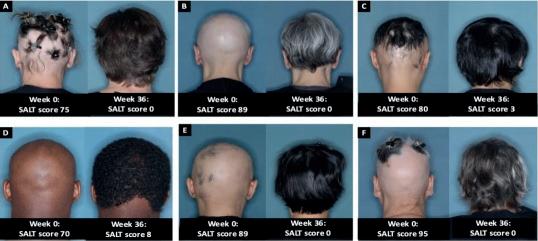
Most participants had an average age of 37 years. Evidence showed that about 40% of participants who received a 4 mg dose of oral baricitinib had 80% hair growth after 36 weeks; for the 2 mg dose, 20% had satisfactory results, and only 6% had favorable outcomes with placebo. It should be noted that some adverse events reported were the presence of acne, urinary tract infection, and herpes zoster infections. This vital study showed that the blockage of the immune system that attacks the hair follicles favors hair growth.
Courtesy: https://www.nbcnews.com/health/health-news/first-alopecia-treatment-autoimmune-disorder-causes-sudden-hair-loss-a-rcna33461
Sources:
Original article: King, B., Ohyama, M., Kwon, O., Zlotogorski, A., Ko, J., Mesinkovska, N. A.,
New England Journal of Medicine, 386(18), 1687-1699.
https://investor.lilly.com/news-releases/news-release-details/fda-approves-lilly-and-incytes-olumiantr-baricitinib-first-and
36
...& Sinclair, R. (2022). Two phase 3 trials of Baricitinib for alopecia areata.
BUSINESS & DEVELOPMENT
1. 2.
Early detection of pancreatic cancer

Pancreatic ductal adenocarcinoma (PDAC) is a highly lethal type of pancreatic cancer with a 5-year survival rate of 2.9% to 10%. More than half of cases are diagnosed latestage, and sufferers experience symptoms they continually ignore, such as general abdominal pain or unexplained weight loss. There are few therapeutic options, and surgical resection remains the leading “curative” form in patients with small carcinomas. It has been established that the primary genes driving pancreatic carcinogenesis are KRAS, TP53, CDKN2A, and SMAD4. The populations where a higher prevalence of pancreatic cancer is reported are Japan, Hungary, and Uruguay. With the rise of Artificial Intelligence (AI), it has been possible to stratify patients and identify risks associated with the development of PDAC, thus becoming a promising alternative for early diagnosis.
Starting in April of this year (2022), the Japanese company Fujitsu, the leader in information and communication technologies (ICT), in partnership with the South Tohoku General Hospital, initiated a novel research project in search of an AI solution that detects pancreatic cancer at an early stage; to this end, are analyzing 300 non-contrast CT scan images of PDAC patients. The AI can identify the region corresponding to the pancreas (yellow color) and identify suspicious parts affected by cancer cells (red color); this is done by estimating the continuity between the anterior and posterior cross-sectional images taking into account the connection of the anatomical tissue and automatically performing a 3D analysis of areas with solid continuity, in addition to a flat analysis of areas with little continuity. With these images, an early, reliable, and efficient
visual diagnosis is generated to identify patients with a suspected risk of pancreatic cancer; after this detection, the patient may be referred to a gastroenterologist for detailed analysis. This is how this technological or ecological alternative can greatly help pancreas cancer and several other diseases.
BUSINESS & DEVELOPMENT
Source: https://www.news-medical.net/news/20220524/Using-AI-to-Achieve-Earlier-Diagnosis-of-Pancreatic-Cancer.aspx

Original source: https://www.fujitsu.com/global/about/resources/news/press-releases/2022/0425-01.html
Secondary sources:
1.
Kenner, B., Chari, S. T., Kelsen, D., Klimstra, D. S., Pandol, S. J., Rosenthal, M., ...& Wolpin, B. (2021). Artificial intelligence and early detection of pancreatic cancer: 2020 summative review. Pancreas, 50(3), 251.
Sarantis, P., Koustas, E., Papadimitropoulou, A., Papavassiliou, A. G., & Karamouzis, M. V. (2020). Pancreatic ductal adenocarcinoma: Treatment hurdles, tumor microenvironment and immunotherapy. World journal of gastrointestinal oncology, 12(2), 173. Siegel Rebecca, L., & Miller Kimberly, D. (2019). Jemal Ahmedin. Cancer statistics, 2019. CA: a cancer journal for clinicians, 69(1), 7-
Claudia
Mejía Morales,
Research and Development Analyst at Drox Health Science. Ph.D in Biosystematics, Ecology and Management of Natural and Agricultural Resources, with orientation in Biotic Products; Master in Environmental Sciences, with orientation in Environmental Technology. With 10 publications in national and international indexed journals.

38
Figure: Detection of suspected pancreatic cancer using the newly developed technology. Courtesy.
Writing by PhD BUSINESS & DEVELOPMENT
2.
3.
Hospital Hispano has developed the Research Ethics Committees (REC), the Research Committee (RC) and the Biosafety Committee (BC) that oversee the methodology of studies and the rights of participants in clinical trials.

ADVANTAGES
RESPONSE TIME
With our online platform, you get a response within 24 to 48 hours after the session.
QUALIFIED PERSONNEL
Research studies are reviewed by multidisciplinary committees, with strict follow-up on each of the procedures.
EXCELLENCE IN PROCESSES
We have procedure manuals, we keep meeting minutes and maintain control of the processes to deliver in time.
HUMAN VISION
Our priority is the human being, to watch over their rights, respect their freedoms, and the confidentiality of the information collected.
contacto1@comiteshispano.com.mx
T. 33 2304 7759
www.comiteshispano.com.mx
Pedro Moreno #934 Col. Centro, Guadalajara, Jalisco. CP. 44100
The shares of the pharmaceutical AMYLYX soar after the approval of ALBRIOZA
After the drug called ALBRIOZATM from the American pharmaceutical company Amylyx based in Cambridge, Massachusetts, was approved on June 13 by the Canadian agency Health Canada for the treatment of amyotrophic lateral sclerosis, or ALS, the shares of the pharmaceutical company, reached their highest values since February of this year.

The ALS, also known as Lou Gehrig’s disease, after the baseball player, is a progressive disease that affects nerve cells in the brain and spinal cord causing loss of muscle control. Eventually, it affects motor control of the muscles needed to move, speak, eat, and breathe, leading to a deadly outcome.
In an extension study, ALBRIOZATM showed an increase in the survival of participants who received it for up to 6.5 months, representing a promising alternative for the diagnosed community.
40
ALBRIOZA or AMX0035 is a drug consumed orally with two active ingredients: phenylbutyrate and taurursodiol, which has been proposed as a reducer of cell death in neurons, decreasing stress on the endoplasmic reticulum and mitochondrial dysfunction. A trial is also being conducted to evaluate its efficacy in treating Alzheimer’s disease (NTC03533257).
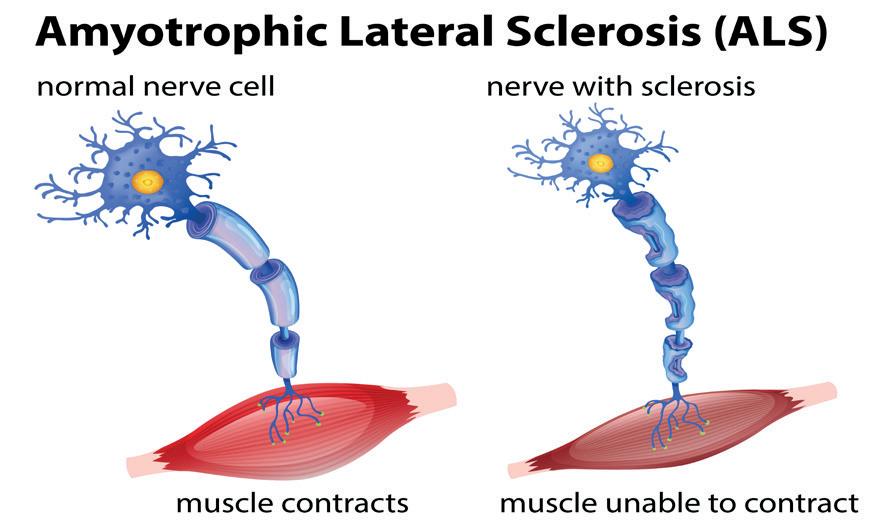
Amylix shares stand at $21.87 as of July 7, 2022, up from $13.09 a month ago, before the drug’s approval by Health Canada. Currently, the pharmaceutical company is listed on NASDAQ, and until now, it has only one medication.
Sources: https://www.als.org/ - www.amylyx.com - https://www.nasdaq.com/market-activity/stocks/amlx
Writing by
Carmen de la Rocha, PhD
Director of Research and Development at Drox Health Science. PhD in Biotechnology, Master in Biochemical Engineering. More than eleven years of experience in clinical research and basic science with 8 publications in indexed international journals. Member of the National System of Researchers, level I.

41
BUSINESS & DEVELOPMENT
Dostarlimab: Immune cell switch that fights rectal cancer
PD-1 is a protein found in T lymphocytes, which act as “switches” for another protein called PD-L1 (programmed death ligand 1), which works to prevent T cells from attacking healthy cells in the body. Unfortuna-tely, some cancer cells similarly contain large amounts of PD-L1, which prevents the immune system from attacking them.
Dostarlimab is an immunotherapy drug commonly used for endometrial cancer, whose action is to prevent the binding of PD-1 with PD-L1, which allows cancer cells to be detectable by the immune system and subsequently eliminated.
In a recent study published by researchers at Sloan Kettering Memorial Cancer Center, twelve patients with stage II or III rectal adenocarcinoma with a deficiency in pairing error repair to a treatment of one dose of dostarlimab (priced at $11 each) every three weeks, over a sixmonth period. During the clinical trial, none of the volunteers received chemo or radiotherapy, nor did they have to undergo surgery to treat recurrences (conventional treatments for this type of cancer).
Writing by PhD
Wendy López Romero,
Research and Development Analyst at Drox Health Science. PhD in Medical and Pharmaceutical Biotechnology, Master in Molecular Biology. More than six years of experience in molecular biology, Immunology, Biochemistry and Proteomic, as well as in the development and validation of medical devices, with five publications in indexed journals.
At the time of publication of the final report (June 2022), no cases of progression or recurrence have been reported during study follow-up, and no grade 3 or higher adverse events have been reported.

42
BUSINESS & DEVELOPMENT
Despite the initial findings of the remarkable benefit of using dostarlimab as a treatment for rectal cancer, it is necessary to replicate the results published by the research group of Dr. Luis A. Díaz in a more extensive and diverse population, to further clarify whether the action of this drug is similar in different populations.

GlaxoSmithKline, which markets Dostarlimab under the name Jemperli, has acquired all outstanding shares of Sierra Oncology ($55 per share in cash), representing a total capital value of approximately $1.9 billion.
The price per share acquired represented a premium of roughly 39% to Sierra Oncology’s closing share price on April 12, 2022, and approximately 63% to Sierra’s volumeweighted average price during the last 30 trading days. With this, this pharmaceutical company seeks to strengthen its areas of therapies aimed at rare forms of cancer.
BUSINESS & DEVELOPMENT
Cercek, A., Lumish, M., Sinopoli, J., Weiss, J., Shia, J., Lamendola-Essel, M., ...& Diaz Jr, L. A. (2022). PD-1 Blockade in Mismatch Repair–Deficient, Locally Advanced Rectal Cancer. New England Journal of Medicine. ul Hussain, H., Burney, M. H., Rehan, S. T., & Hasan, M. M. (2022). Dostarlimab: A breakthrough in the field of oncology. Annals of Medicine and Surgery, 104046. https://cincodias.elpais.com/cincodias/2022/04/13/companias/1649864997_678266.html 1. 2. 3.
Sources:
Dr. Ana Villaseñor-Todd

Mexican scientist renowned for her studies in minimal hepatic encephalopathy, oxidative stress, quality of life, and social cognition. A physician with graduate studies at Texas A&M University. Certified by the Pan American Health Organization (PAHO) as a facilitator of mhGAP (Mental Health Gap Action Program) CEO VICOMMA group.
Technical committee: Dr. Carlos Alejandro Cortez Hernández
Fatty liver,
the beginning of the end
In the wonderful world of hepatocytes…
“If you knew time as well as I did, you wouldn’t talk about wasting it...”
-Alice in Wonderland.

Ajourney back in time... One summer night, I was at the closing gala of a congress on the liver. It was carried out in a house of neoclassical architecture, typical of the nineteenth century. The night adventure began when I visited the toilet to touch up my makeup.
The unusual porcelain has survived, like the entire property, to the deterioration of the urban beauty of Paseo de Montejo
Avenue. A silent property aroused my interest in its historical presence, from a time of splendor of the magical times of hene-quen, not only of the state but of the country. A mysterious, romantic, cozy place, as if the house whispered a pamper and hugged you. From the garden, delimited by columns of Ionic style, a portico, and a beautiful piano in the basement of French style could be observed. I will confess that I did not miss the opportu-
44
SCIENCE TODAY
nity to entertain the night with the piece that my husband fell in love with when I met him, Fur Elise; the place’s acoustics are perfect despite my rusty fingers. Suddenly, when touching a molding on the wall, like Alice in Wonderland, a secret door opened. I could illuminate with the lamp of my mobile some dark stairs, spiral, with small vents. I climbed each of the irregular steps, my heart in full paroxysmal supraventricular tachycardia was heard more than the bustle of the party. I traveled back in time; suddenly, I was in a dome with rich interior decoration. I felt like in the Almoravid Qubba, in Marrakech.
Then I contemplated the calm of the starriest night I have ever seen, sitting in a viewpoint of Moorish influence; the wind played with my hair, and I started writing. The floors of that terrace of expensive building materials resembled the Saadian tombs of Marrakech; the sunrise surprised me in the Minaret. I received the first rays of the sun as a gift of time; it was the same sun that illuminated the Porfiriato. Suddenly on my mobile screen, as a time
machine, I hear a “trin” notification of my iCal 5K NASH. I teleport, and again is 7:00 am in the city, the first race for liver health and against obesity, five kilometers that arose thanks to the efforts of the Mexican Association of Hepatology on July 16, 2022, in Merida, Yucatan; I toured all of Paseo de Montejo with great colleagues and friends.
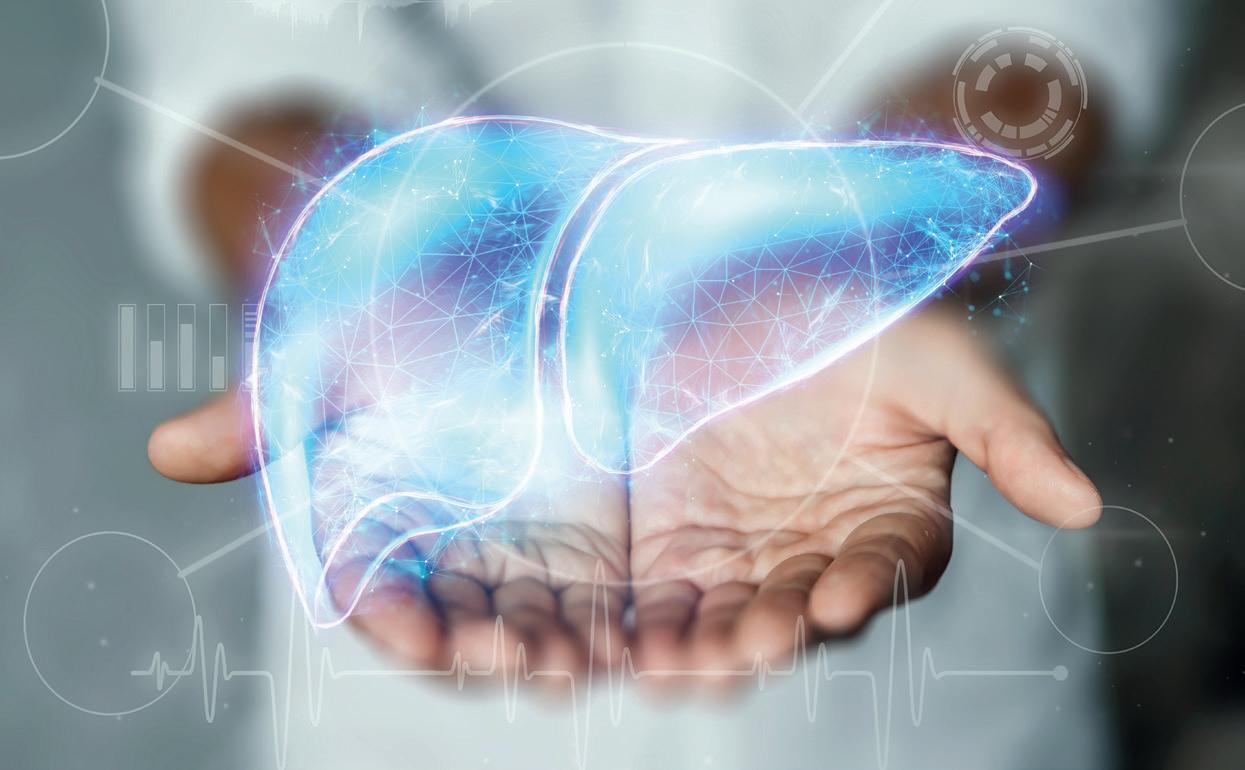
The following week, already back to reality to commemorate the #WorldHepatitisDay, I placed a post on my social networks, inviting all my patients to participate in a marathon of timely detection of hepatocellular cancer.
A few minutes later, I received a funny audio from two friends, Laura and Jorge, in the chat we have in common with my husband. The audio said something like that:
45
Jorge: “Good morning, you know what, Dr.? you don’t need to invite me to a marathon, I know what the state of my liver is... my liver is fucked.”
Laura: “I don’t know, Dr., how do you invite me to run a marathon to know the health of my liver? If I don’t have a liver to run. What’s more, Dr., I already sent a memo to my liver, I said: “Liver, get ready; today, you have a talent test.” Also, I don’t know how you do it, in the morning, you run a marathon, and then you do many studies.”
-Jorge interrupts: “My life, Dr., convoked a marathon of studies. She will do many studies; that’s why it’s a marathon.”
After attacking myself with laughter for a few minutes, I realized that my friends and family have no fear of God nor the remotest idea of where the liver is located and less of what it is for. As is evident, they have all the metabolic risk factors to start as DM2 and being critical drivers of chronic liver disease, including fatty liver, I decided to write the following lines:
Hepatocytes are the parenchymal cells of the liver, are polygon-shaped, and perform metabolic functions. The liver is the most talented organ in the human body. The ancient Greeks linked it to pleasure: it is believed that the words hepatic and hedonistic share the same root. The Elizabethans referred to their monarch not as the head of state but as the nation’s liver: beware of anyone who dared to make him angry.
Since ancient times, Roman writers such as Cicero and Livy, in several passages of their works, describe the practice of hepatoscopy (etymologically: examination of the liver), a prediction by examining the liver coming from an animal sacrificed to the gods. It was one of the earliest popular divinatory techniques among
the Mesopotamian peoples, for both the Assyrians and the Babylonians. For them and their medical-religious knowledge, the liver was the generator of blood, the seat of emotions, feelings, and desires, that is, life’s seat organ 1 .
But what happens in the seat of life?
Metabolism consists of a series of reactions that occur within the cells of living organisms to sustain life. The metabolism process involves many interconnected cellular pathways to ultimately provide cells with the energy needed to perform their function.
These pathways’ importance and evolutionary advantage are visible, as many remain unchanged by animals, plants, fungi, and bacteria. In eukaryotes, metabolic pathways occur within the cytosol and mitochondria of cells, and the utilization of glucose or fatty acids provides most

46
SCIENCE TODAY
of the cellular energy in animals. Metabolism is organized into metabolic pathways to maximize energy capture or minimize its use. Metabolism can be divided into a series of chemical reactions comprising the synthesis and degradation of complex macromolecules known as anabolism or catabolism. The basic principles of energy consumption and production are discussed, along with the biochemical pathways that constitute the metabolic process-es fundamental to life(3). Our liver gets sick when metabolic processes start, which are inadequate for the intended purpose.
Currently, risk factors for fatty liver disease are common in the Mexican population, and available studies seem to underestimate their prevalence. Nonalcoholic steatohepatitis (NASH) is the inflammatory subtype of nonalcoholic fatty liver
disease (NAFLD); it can be considered as: “the beginning of the end, a prelude to tragedy,” as it is associated with the progression of chronic liver disease and the development of cirrhosis; 5% will develop hepatocellular cancer and the likely need for a liver transplant. Reflection is required on distributive justice around this issue in Mexico.
Despite its importance, NAFLD is little recognized in clinical practice. Nonal-
coholic fatty liver disease (NAFLD) affects approximately 3% to 6% of the U.S. population, and the prevalence is increasing. NASH is strongly associated with obesity, dyslipidemia, type 2 diabetes, and metabolic syndrome.
Although several non-invasive tests and scoring systems characterize NAFLD and NASH, liver biopsy is the only accepted method for diagnosing NASH (fortunately indicated only in a few patients or clinical trials).
In Mexico, Bernal-Reyes et al. studied 585 volunteers, resulting in a prevalence of NAFLD of 41.3%, predominance of men over 50 years, poor eating habits, and a sedentary lifestyle. Males, obesity, metabolic syndrome, and elevated ALT were risk factors for the disease, and 40% of those affected had advanced fibrosis. They concluded that the prevalence of NAFLD in our population is among the highest in the world2. The U.S. Food and Drug Administration has not approved any specific therapies for NASH. Lifestyle modification is the mainstay of treatment, including changes in diet and exercise, with the primary goal of losing 7% of total weight to eliminate fatty liver and 10% of weight to try to reverse liver fibrosis. Substantial improvement in histological outcomes, including fibrosis, directly correlates with increased weight loss.

47 SCIENCE TODAY
In some cases, bariatric surgery may be indicated to achieve and maintain the degree of weight loss necessary for the therapeutic effect. An estimated 20% of patients with NASH will develop cirrhosis, and NASH is predicted to become the leading indication for liver transplants in the U.S. The mortality rate among patients with NASH is substantially higher than the general population or patients without this inflammatory subtype of NAFLD, with an annual all-cause mortality rate of 25.56 per 1000 person-years and a liverspecific mortality rate of 11.77 per 1000 person-years.
The conditions of the disease can be modified. It occurs to me that the urgent need for the teamwork of two branches of medicine, such as hepatology and endocrinology may arise, as well as the close relationship of medical practice based on scientific evidence. Public policies are needed that favor actions to reduce the current trend of the Mexican population.

Sources:
1. Abel Fernando Martínez Martín, Doctor of Medicine and Surgery, Magister and Doctor of History. Research group Historia de la Salud en Boyacá-Universidad Pedagógica y Tecnológica de Colombia (UPTC).
2. Bernal-Reyes R, Icaza-Chávez ME, Chi-Cervera LA, Remes-Troche JM, Amieva-Balmori M, Priego-Parra BA, Martínez-Vázquez S, Méndez-Guerrero IO, Martínez-Rodríguez L, Barranca-Enríquez A, Palmeros-Exsome C, Cano-Contreras AD, Triana-Romero A. Prevalence and clinical-epidemiologic characteristics of a Mexican population with metabolic (dysfunction) associated fatty liver disease: An open population study. Rev Gastroenterol Mex (Engl Ed). 2022 May 7:S2255-534X(22)00026-3. doi: 10.1016/j.rgmxen.2022.04.001. Epub ahead of print. PMID: 35537911.
3. Judge A, Dodd MS. Metabolism. Essays Biochem. 2020 Oct 8;64(4):607-647. doi: 10.1042/EBC20190041. PMID: 32830223; PMCID: PMC7545035.
SCIENCE TODAY
1.
2.
3.
Dra. Mafer Arboleda
Associate Director of Research at Santé Cannabis, a leading clinic specializing in the prescription of medical cannabis in Quebec, Canada. Anesthesiologist specialized in chronic pain and palliative care by UNAM and INCMNSZ. Medical surgeon from the Pontificia Universidad Javeriana, Bogotá. Clinical fellowship and postdoctoral studies in Supportive Care in Cancer and Medical Cannabis at McGill University, Montreal, Canada.

49
LET’S TALK ABOUT CANNABIS
Medical cannabis and
COVID-19
What is their relationship, and why have they been linked?
More than two years after the world has completely stopped, united all in the fight against the global pandemic generated by the SARS-CoV-2 virus, and when in the world there are almost 5.5 million deaths caused by it and more than 313 million infected by COVID-19, the global medical system has united in the search for solutions like never before and under enormous pressure. “However, this desperate search for an unknown enemy has led to solutions being explored where there may not be,” says Dr. Mafer Arboleda, an anesthesiologist specializing in chronic pain and palliative care and an expert in medical cannabis.
Information on the possible benefits of consuming cannabinoids for the management of COVID-19 was recently released. Is this true? Where did it come from? Dr. Mafer explains in-depth and, despite how exciting this news might sound at first, it is premature to consider that the use of marijuana, in any of its presentations, can prevent the spread and treat the complications of this terrifying and complex disease.
“However, this in no way means that smoking marijuana or consuming cannabinoids will prevent or solve the health problems caused by the COVID-19 pandemic we are currently experiencing,” says Dr. Mafer Arboleda.
“Although the results of some research are promising, there is still a lack of good quality human studies to verify the safety and efficacy of medical cannabis to treat SARS-CoV-2 infection,” he says. With all the impact that this pandemic has generated, not only in terms of physical health and the
significant loss of life but also in terms of mental, emotional, affective, and economic stability, it is customary to look for different solutions and alternatives. And although cannabis for medicinal purposes is ultimately an excellent ally for various ailments still being investigated, this does not mean that it is a miracle drug, something Dr. Mafer emphasizes.
50
LET’S TALK ABOUT CANNABIS
COVID AND CANNABIS
What is certain is that thanks to its powerful anti-inflammatory effect, cannabidiol or CBD, one of the main components of the Cannabis sativa plant, can help control the “cytokine storm,” as it is called the exaggerated release of molecules and pro-inflammatory substances in the body, which produces damage at the lung level (Acute Respiratory Distress Syndrome) and multi-organ failure, the result of suffering from COVID-19 disease.
On the other hand, CBD has also been shown to decrease inflammation and pulmonary fibrosis in animal models with asthma[1]. “However, it is crucial to note that these studies have been in animals and cell tissue, not humans. These are promising results, but more clinical research is still needed,” says Dr. Mafer.
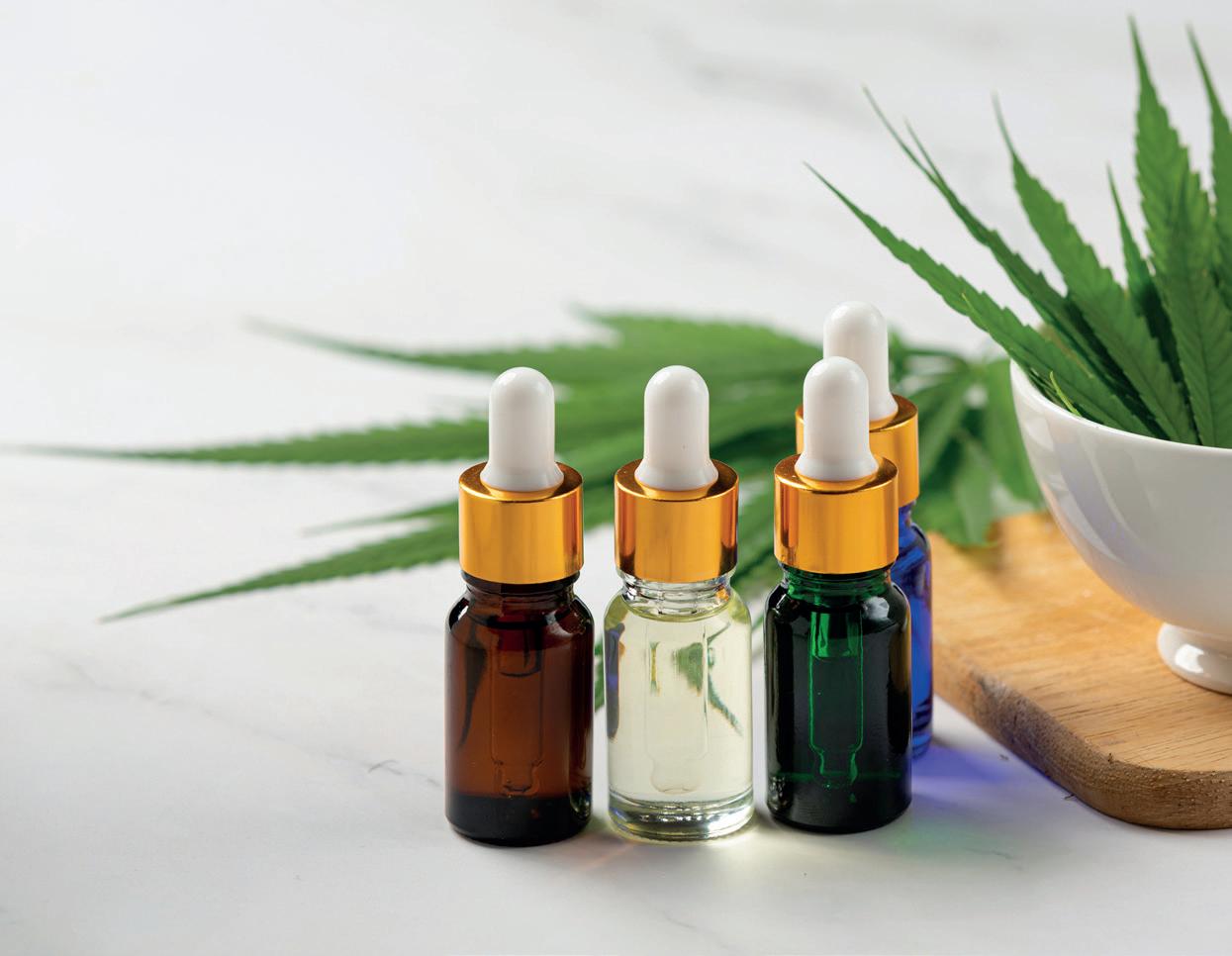
LET’S TALK ABOUT CANNABIS
In addition, another article published at the end of 2020[2] explains that, in studies of cellular tissue, extracts enriched in CBD showed an inhibition of the genes that express the angiotensin-converting enzyme 2 (ACE2) and TMPRSS2, critical proteins that allow the entry of the SARSCoV-2 virus into the body.
Thus, although many of the mechanisms of action of CBD suggest that it can be an essential ally in the control of this COVID-19 pandemic, it is still early to affirm that smoking marijuana or consuming cannabidiol is effective in preventing and overcoming the disease and even worse, when cannabis is consumed without medical supervision.
For now, as we have previously heard (but it is worth remembering) through statements from experts and international
institutions such as the World Health Organization, the only way to prevent the spread and contagion of this viral infection is through proper use of masks, continuous hand washing and social distancing. “We hope that soon advances in research can give us more information about this hopeful cannabinoid-based treatment in PATIENTS with COVID-19,” concludes Dr. Mafer Arboleda.

Sources:
Esposito G, Pesce M, Seguella L, Sanseverino W, Lu J, Corpetti C, Sarnelli G. The potential of cannabidiol in the COVID-19 pandemic. Br J Pharmacol. 2020 Nov;177(21):4967-4970. doi: 10.1111/bph.15157. Epub 2020 Jul 16. PMID: 32519753; PMCID: PMC7300643.
Wang B, Kovalchuk A, Li D, Rodriguez-Juarez R, Ilnytskyy Y, Kovalchuk I, Kovalchuk O. In search of preventive strategies: novel high-CBD Cannabis sativa extracts modulate ACE2 expression in COVID-19 gateway tissues. Aging (Albany NY). 2020 Nov 22;12(22):22425-22444. doi: 10.18632/ aging.202225. Epub 2020 Nov 22. PMID: 33221759; PMCID: PMC7746344.
LET’S TALK ABOUT CANNABIS
[1] [2]



RESEARCH We have the infrastructure and medical and administrative team required to implement and conduct research protocols in strict compliance with international standards and guidelines. GUADALAJARA T.(33) 2002 8697 CDMX T.(55) 8983 6796 AGUASCALIENTES T.(33) 2002 8696 @cidvidinvestigacionbiomedica Learn more at: www.investigacionbiomedica.com.mx NEW OPENING Golfo De Cortes #2974 Guadalajara, Jalisco Mexico CidVID Biomedical Research Nephrology COMING SOON
CLINICAL
Callie Seaman, PhD

Executive director & scientific lead. An honorary researcher at Sheffield Hallam University, Director of Aqualabs and Hempire specialising in cannabis cultivation and secondary metabolite production.
Cannabis and viruses, the whole picture!
Cannabis is one of the most complex plants used in modern medicine, producing thousands of different secondary metabolites in response to abiotic and biotic stresses (Seaman 2021; FloresSanchez & Verpoorte, 2008). These include the well-known cannabinoids, terpenes, flavonoids, fatty acids, Lignanamides, stil-benoids, lignans, and alkaloids. These compounds have an array of effects on the plant itself helping to defend it from attack from insects, mammals, and microbes along with irreversible environmental stress damage such as UV light, heat and drought. Many of these compounds have medicinal properties within humans and animals. The major constituents of cannabis medication are the phytocannabinoids, particularly Delta-9 -Tetrahydrocanna-
binol (THC) and Cannabidiol (CBD). Within the plant they are found in the acid form which has a much lower affinity for the CB receptors and require decarboxylation to become highly active within the body. This involves the loss of a carboxylic acid group from the cannabinoid and is achieved through heating. It is the endocannabinoid system (ENS) which regulates the balances between the central nervous system and the immune system that is the mode of action these phytocompounds interact with.
Many of these compounds produced by cannabis interact with the ECS and within humans is subject dependent, as the maintenance of homeostasis between the
54
LET’S TALK ABOUT CANNABIS
immune system and nervous system differs from individual to individual. Differences between species has also been documented, with canine subjects having less CB1 receptor in the brain than humans (Hartsel et al 2019; Silver 2019).
Cannabis based medicines come in many forms, from flower which is vaped to oils which can be made into tinctures, capsules, sprays, topicals and suppositories. The process of making the oils involve extraction such as distillation, sub-critical CO2, ethanol, chromatography, heated press and sonication (Hazekamp 2007). All these methods will produce different types of products with varying concentrations and ratios of each compound. The type of extract and the number of compounds present is also important as there is strong evidence of what is know as the entourage effect.
Cannabis extracts can be spilt into Full plant extracts, full spectrum, Broad spectrum, and isolates. Full plant extract will contain all the cannabinoids including the THC, which is one of the controlled cannabinoids. This type of extract will also contain terpenes, flavonoids, fatty acids and lignans in much lower concentrations than the cannabinoids, however they are still present. These compounds have been shown to improve and alter the effectiveness of the cannabinoids in what
is known as the Entourage effect (Russo, 2019). Studies in Canada by Dr. Evan Lewis at the Neurotology Centre of Toronto found that lower concentration of cannabinoids was required when a full plant extracted was used to treat children with refractory epilepsy in comparison to and isolate cannabinoid products, which often have greater side effects.
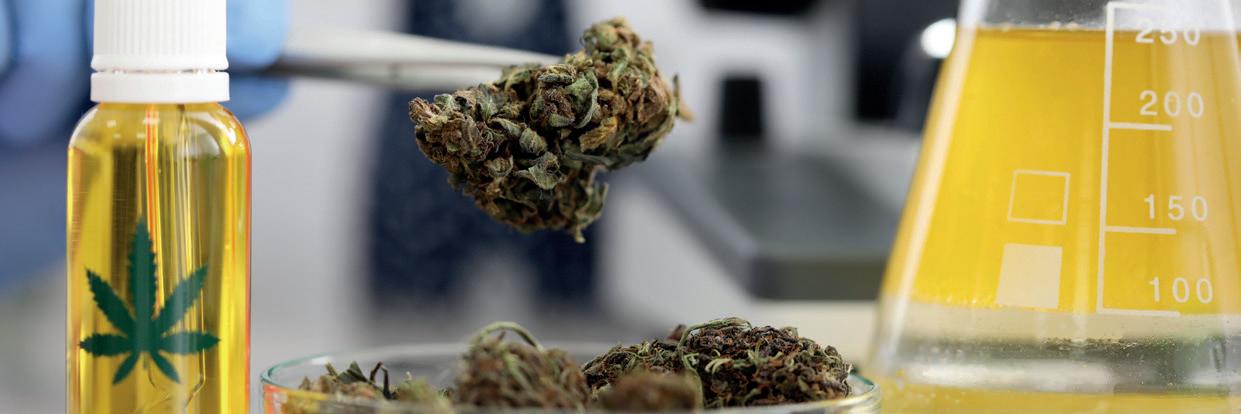
Cannabis products and their efficacy against viral disease has come under scrutiny from the medical community, with much of the information on the internet coming from marketing material put out by retailers and manufacturers. In the last 5 years with more countries changing legislation surround cannabis and the availability of prescribed products, there has been an increase acceptance as it as a medicine and published peer review work.
A literature review performed by Tague 2020, specifically looking at Cannabidiol (CBD), as an isolate and its effects on viral disease. Giving the title Cannabidiol for viral disease: Hype of Hope and really delving into the published literature. The search found that preclinical studies had been performed on hepatitis, Kaposi sarcoma, shingles, Ebola, herpes and HIV. Within this review they found that CBD had a direct antiviral effect against hepatitis C but not against hepatis B. It was also more effective as a post infection treatment
LET’S TALK ABOUT
CANNABIS
against Ebola and is more of the antiinflammatory effects of CBD as appose to the antiviral effects that helped with the treatment of viral infections.
Studies on the antiviral effects of individual terpenes, not just in cannabis has been well documented (Ibrahim et al 2021, Loizzo, 2008; Booth & Bohlmann, 2019). A study performed by Ilbrahim et al 2021, using fennel extract demonstrated antiviral activity against Hepatitis C Virus (HCV). Limonene and ocimene were two of the major active found in the fennel extracts which were most effective. These terpenes are also found in cannabis sativa L, which display antiviral properties (Lowe 2021).
Compounds specific to cannabis which have shown promising results include the flavonoid Caflanone, have been shown to be Phyto antiviral, specifically to the human coronavirus OC43 (HCoVOC43) also known as SARS-CoV-2 which cause serve acute
respiratory disease (Ngwa et al 2020). This in-vitro study published by Ngwa et al 2020, showed that caflanone had a strong bin-ding affinity to two proteases (PLpro and 3CLpro) which are essential in the replication of SARS-CoV-2 in humans. It was also theorised that caflanone also help prevent the entry into the respirtory system by inhibit the angiotensinconverting enzyme 2 (ACE2). Other studies support this theory that cannabis based medicines block the entry of SARSCoV-2, with van Breenman et al, focusing on cannabinoids blocking cellular entry of into respiratory cells (van Breenman 2022). Interestingly another study on the efficacy of cannabis-based products as a potential treatment for covid looked at how cannabinoids could possible quell the cytokine storm created by the virus, but concluded that more studies and trial were needed. (Onaivi 2020) In the UK Drug Sciences are currently conducting work with Dr Liz Iveson on Feasibility of Cannabidiol for the Treatment of Long COVID.
Cannabis not only treats the virus itself but has help to alleviate the symptoms
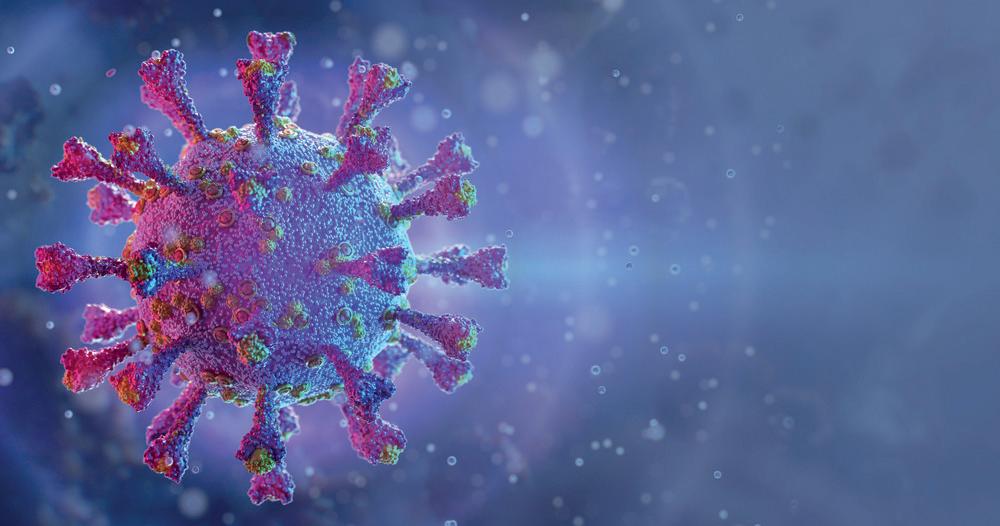
56
LET’S TALK ABOUT CANNABIS
from mental trauma and issued faced by many patients. The pandemic has brought challenging times, which paid its toll on the mental health of many individuals. During the Pandemic 2020-2021 a study was conducted in Australia of 1634 women internationally who used cannabis to treat endometriosis (Armour2022). The study found that the most common reason for consuming cannabis during the Pandemic was due to stress and anxiety (59%).
Cannabis based medicines are not the silver bullet we are all hoping will save the world in the fight against viruses, however they can certainly lend a helping hand in the recovery and treatment of viral infections!
Sources:
Seaman, C. (2021). Cultivation Stress Techniques and the Production of Secondary Metabolites in Cannabis sativa. In Recent Advances in the Science of Cannabis (pp. 1-30). CRC Press.
Loizzo, M., Saab, A., Tundis, R., Statti, G., Menichini, F., Lampronti, I., Gambari, R., Cinatl, J. and Doerr, H. (2008), Phytochemical Analysis and in vitro
Antiviral Activities of the Essential Oils of Seven Lebanon Species. Chemistry & Biodiversity, 5: 461-470. https://doi.org/10.1002/cbdv.200890045
Hartsel, J.A., Boyar, K., Pham, A., Silver, R.J. and Makriyannis, A., 2019. Cannabis in veterinary medicine: cannabinoid therapies for animals. In Nutraceuticals in Veterinary Medicine (pp. 121-155). Springer, Cham.
Armour M, Sinclair J, Cheng J, Davis P, Hameed A, Meegahapola H, Rajashekar K, Suresh S, Proudfoot A, Leonardi M. Endometriosis and Cannabis Consumption During the COVID-19 Pandemic: An International Cross-Sectional Survey. Cannabis Cannabinoid Res. 2022 Jan 21. doi: 10.1089/can.2021.0162. Epub ahead of print. PMID: 35089093.
Lowe H, Steele B, Bryant J, Toyang N, Ngwa W. Non-Cannabinoid Metabolites of Cannabis sativa L. with Therapeutic Potential. Plants (Basel). 2021 Feb 20;10(2):400. doi: 10.3390/plants10020400. PMID: 33672441; PMCID: PMC7923270.
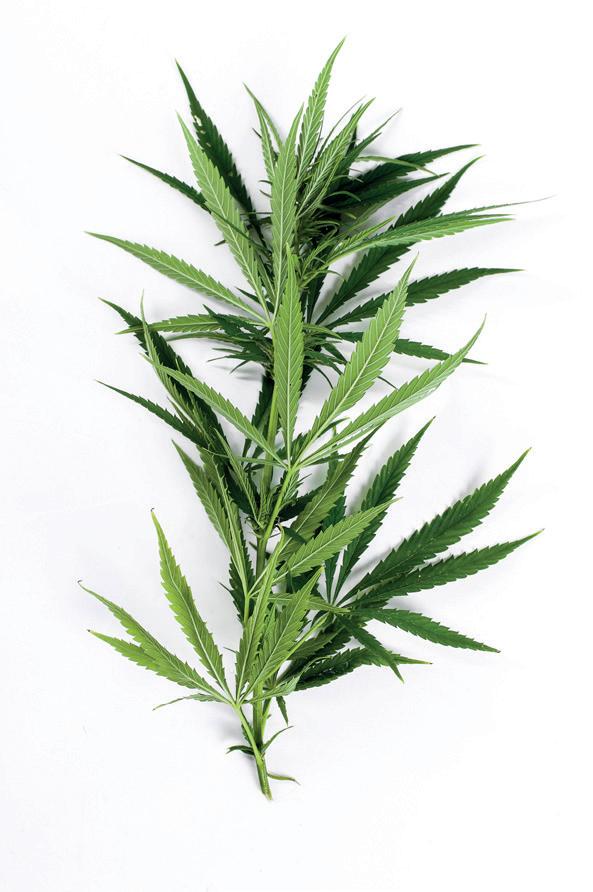
Silver, Robert J. 2019. “The Endocannabinoid System of Animals” Animals 9, no. 9: 686. https://doi.org/10.3390/ani9090686
Mabou Tagne, Alex, Barbara Pacchetti, Mikael Sodergren, Marco Cosentino, and Franca Marino. “Cannabidiol for viral diseases: hype or hope?.” Cannabis and cannabinoid research 5, no. 2 (2020): 121-131.
https://clinicaltrials.gov/ct2/show/NCT04997395
Ibrahim, Nehal, and Ashaimaa Y. Moussa. “A comparative volatilomic characterization of Florence fennel from different locations: Antiviral prospects.”
Food & function 12, no. 4 (2021): 1498-1515.
Hazekamp, A., 2007. Cannabis: extracting the medicine. Leiden University. Ngwa, W.; Kumar, R.; Thompson, D.; Lyerly, W.; Moore, R.; Reid, T.; Toyang, N. Potential of flavonoid-inspired phytomedicines against COVID-19. Molecules 2020, 25, 2707
van Breemen, Richard B., Ruth N. Muchiri, Timothy A. Bates, Jules B. Weinstein, Hans C. Leier, Scotland Farley, and Fikadu G. Tafesse. “Cannabinoids block cellular entry of SARS-CoV-2 and the emerging variants.” Journal of natural products 85, no. 1 (2022): 176-184.
Onaivi, E.S. and Sharma, V., 2020. Cannabis for COVID-19: can cannabinoids quell the cytokine storm?. Future science OA, 6(8), p.FSO625.
Booth, J. K., & Bohlmann, J. (2019, March). Terpenes in Cannabis sativa –From Plant Genome to Humans. Plant Science.
Caplan, D., Dixon, M., & Zheng., Y. (2017). Optimal rate of organic fertilizer during the vegetative-stage for cannabis grown in two coir-based substrates. HortScience, 52(9), 1307-1312.
ElSohly, M. A. (2017). Phytochemistry of Cannabis sativa L. In A. Kinghorn, H. Falk, S. Gibbons, & J. Kobayashi, Phytocannabinoids Unraveling the Complex Chemistry and Pharmacology of Cannabis sativa (Vol. 103, pp. 1-36). Switzerland: Springer International Publishing.
Flores-Sanchez, I. J. (2009). Elicitation studies in cell suspension cultures of Cannabis sativa L. Journal of biotechnology, 2(143), 157-168.
Flores-Sanchez, I. J., & Verpoorte, R. (2008). Secondary metabolism in cannabis. Phytochemistry reviews, 49(12), 615-639.
Hazekamp, A., Peltenburg, R., Verpoorte, R., & Giroud, C. (2005). Chromatographic and spectroscopic data of cannabinoids from cannabis sativa. Journal of Liquid Chromatography & Related Technologies, 28(15), 2361-2382.
Russo, E. B. (2019). The case for the entourage effect and conventional breeding of clinical cannabis: no”strain”no gain”. Frontiers in plant science, 9, 1969.
57
LET’S TALK ABOUT CANNABIS
1. 2. 3. 4. 5. 6. 7. 8. 9. 10. 11. 12. 13. 14. 15. 16. 17. 18. 19. 20.
RANK-CLIR Best Pharmaceutical Stocks
Ranking 2022
10
GlaxoSmithKline plc UK
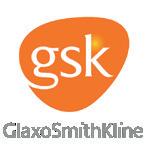
Revenue from Pharmaceutical Drug Sales: $32.10 billion
Total Revenue: $44.75 billion
Percent of Revenue From Pharmaceutical Drug Sales: 72%
Estimated R&D Spend: $6.26 billion
Number of Employees: 90,000
08 07
AstraZeneca plc UK
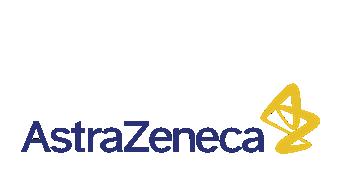
Revenue from Pharmaceutical Drug Sales: $37.4 billion
Total Revenue: $37.4 billion
Percent of Revenue From Pharmaceutical Drug Sales: 100%
Estimated R&D Spend: $7.8 billion
Number of Employees: 83,100
Merck & Co., Inc US

Revenue from Pharmaceutical Drug Sales: $42.74 billion
Total Revenue: $48.74 billion
Percent of Revenue From Pharmaceutical Drug Sales: 87%
Estimated R&D Spend: $12.24 billion
Number of Employees: 68,000
Sanofi SA - France 09

Revenue from Pharmaceutical Drug and Vaccine Sales: $36.55 billion
Total Revenue: $42.5 billion
Percent of Revenue From Pharmaceutical and Vaccine Drug Sales: 88%
Estimated R&D Spend: $6.25 billion
Number of Employees: 99,400
06
Bristol-Myers Squibb US
Revenue from Pharmaceutical Drug Sales: $46.4 billion
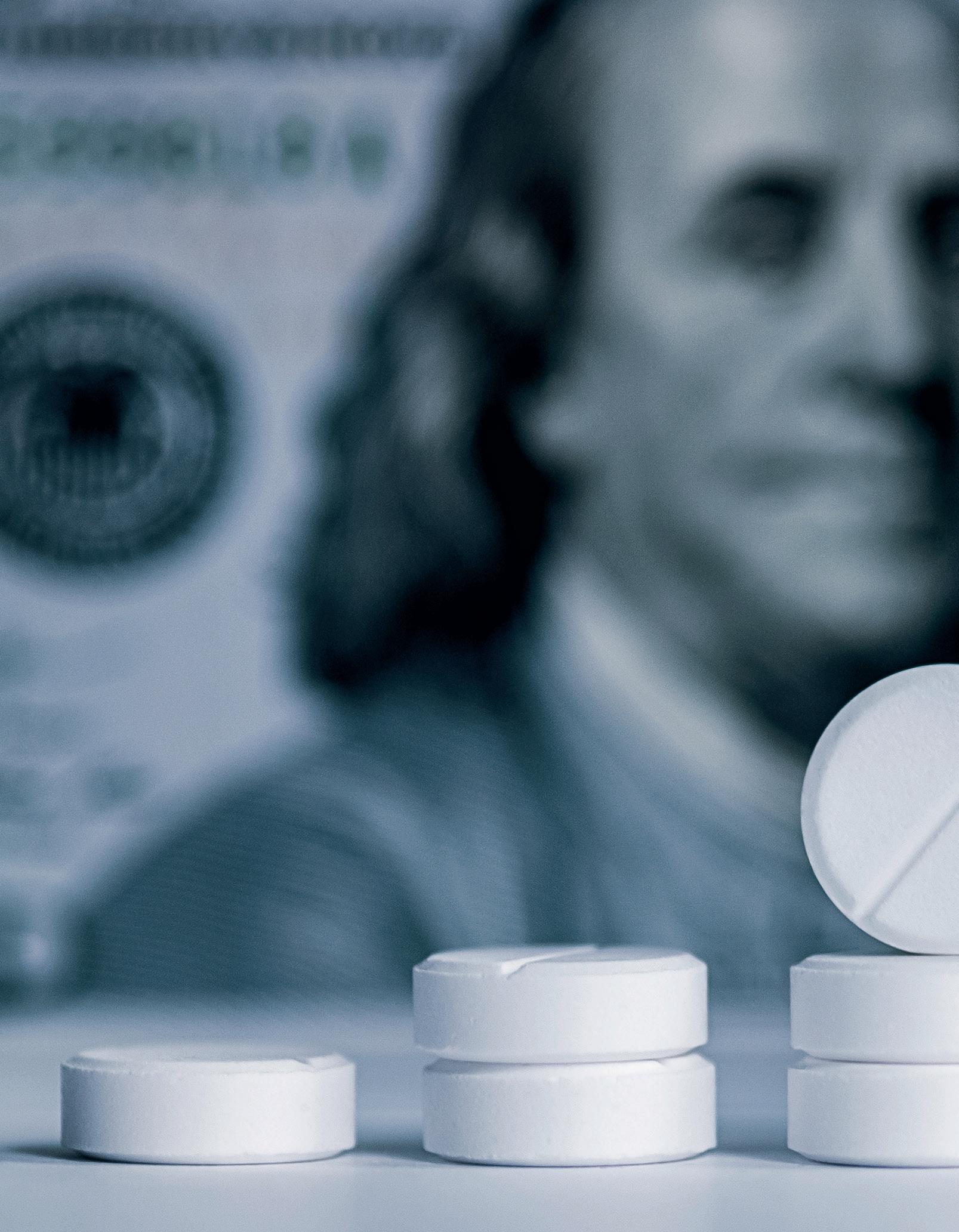
Total Revenue: $46.4 billion
Percent of Revenue From Pharmaceutical Drug Sales: 100%
Estimated R&D Spend: $11.3 billion
Number of Employees: 32,050
*Information based on the latest annual reports provided by the listed companies.
*All figures are in U.S. dollars.
Hoffmann-La Roche AG Switzerland
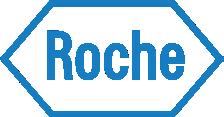
Revenue from Pharmaceutical Drug Sales: $48.47 billion
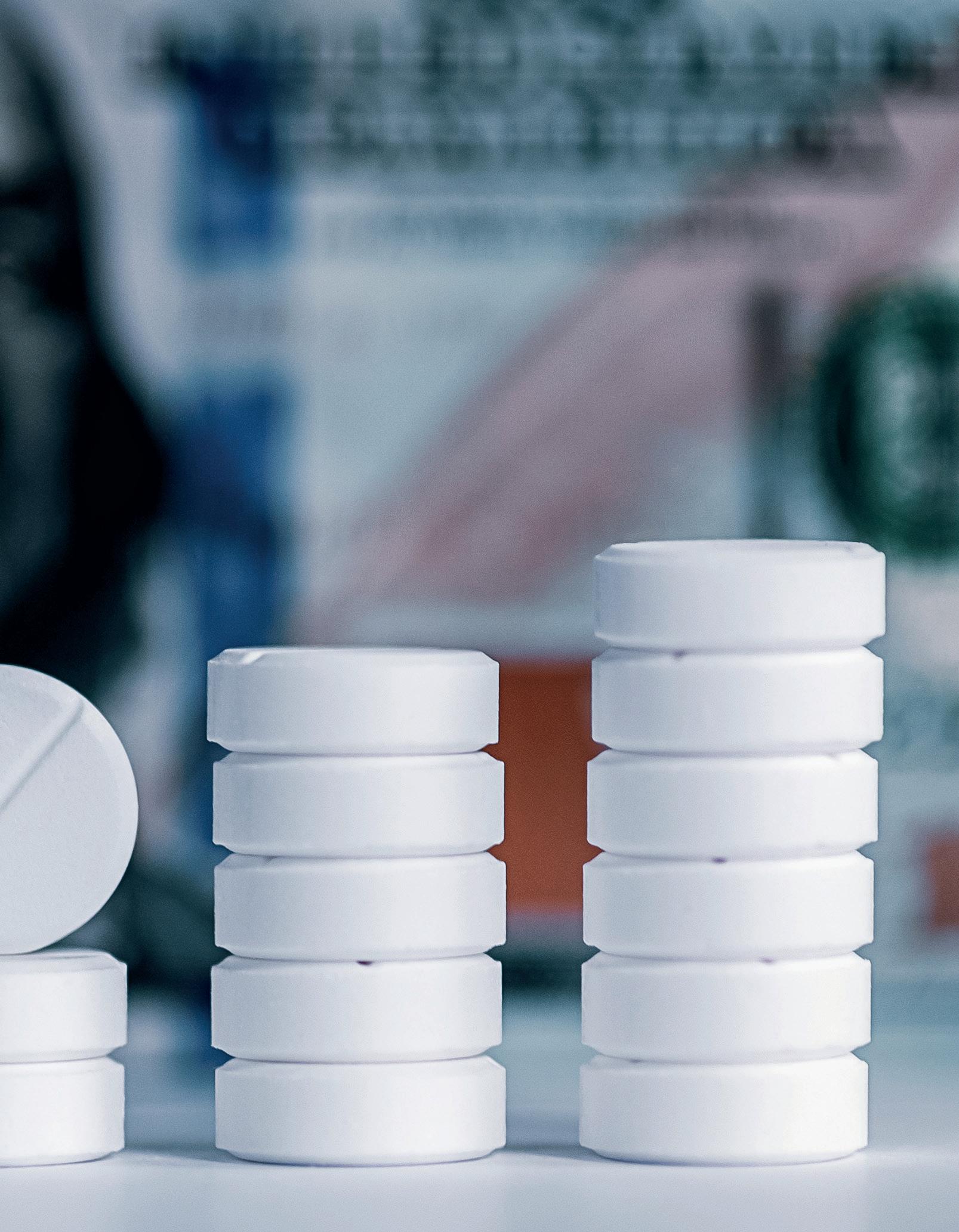
Total Revenue: $67.2 billion
Percent of Revenue From Pharmaceutical Drug Sales: 72%
Estimated R&D Spend: $14.6 billion
Number of Employees: 101,000
Novartis International AG Switzerland
Ingresos por ventas de medicamentos farmacéuticos: $51 600 millones
Ingresos totales: $51 600 millones
Porcentaje de ingresos por ventas de medicamentos farmacéuticos: 100 %
Gasto estimado en I+D: $9540 millones
Número de empleados: 108 000
AbbVie Inc US

Revenue from Pharmaceutical Drug Sales: $56.20 billion
Total Revenue: $56.20 billion
Percent of Revenue From Pharmaceutical Drug Sales: 100%
Estimated R&D Spend: $7.08 billion
Number of Employees: 48,000
To get a glimpse of its scope, it is estimated that the company invested 4.8 billion dollars in research and development in 2021 and has around 574 grants to cover 35 areas of various diseases. Its drugs generate annual sales of more than 1 billion dollars, including Humira, ranked as the best-selling drug in the world.
Johnson & Johnson US 03

Revenue from Pharmaceutical Drug Sales: $52.80 billion
Total Revenue: $93.77 billion
Percent of Revenue From Pharmaceutical Drug Sales: 56%
Estimated R&D Spend: $14.70 billion
Number of Employees: 141,700
It is believed that 91% of J&J’s revenue comes from prescription drugs and medical devices. As of March 2021, the drugmaker posted revenues of $22.32 billion. However, J&J reported first-quarter adjusted earnings per share of $2.59, up from $2.30 a year earlier.
Pfizer Inc US

Revenue from Pharmaceutical Drug Sales: $81.3 billion
Total Revenue: $81.3 billion
Percent of Revenue From Pharmaceutical Drug Sales: 100%
Estimated R&D Spend: $13.8 billion
Number of Employees: 78,500
Their dive into the COVID-19 vaccine business has led Pfizer to generate profits of $37.00 billion in 2021, and they forecast their full-year earnings to be $33 billion from the sale of 2,100 vaccines worldwide.
05
04
02
01
Information update: May 2022. / Editorial CLIR Insider
Josué Bautista Arteaga

Industrial Pharmaceutical Chemist graduated from the National School of Biological Sciences of the IPN. Chairman for the Americas region and Global Pharmacovigilance Society (GPS) ambassador for Latin America. Advisor to the Institute of Pharmacovigilance. Founder of “JBA Farmacovigilancia”. Seventeen years of experience in the Pharmaceutical Industry.
Pharmacovigilance Systems in Latin America for COVID-19:
Brazil, Chile, Costa Rica, and Mexico
Pharmacovigilance in Latin America has had one of its most significant challenges in developing the sensitivity and willingness of the population, health professionals, and patients to report adverse effects, so in these areas of the COVID-19 pandemic, where vaccination has been one of the key instruments to deal with this health emergency, the question arises how suitable are pharmacovigilance systems to positively influence the population to be an active part of the surveillance of these vaccines? To confirm whether what had been identified in the clinical development of these vaccines in
terms of safety is like what in “real life,” it is being observed if there is new information that demands actions that emanate from Pharmacovigilance: analyze, understand, communicate and mitigate risks.
Brazil
Four vaccines are being applied until the beginning of August 2022; about 465.8 million doses have been used. Its National Drug Monitoring Center, part of the regulatory agency, ANVISA, began operations in 2001.
60
CLINICAL RESEARCH & PHARMACOLOGY
Surveillance of COVID-19 vaccines is based on five pillars:
• Daily evaluation of notifications received
• Signal detection
• Monthly Executive Summary of Adverse Events
• Periodic quarterly reports on the assessment of benefits and risks
• Risk Management Plan
The individual reports are collected through VigiMed/Vigiflow for evaluation by the Pharmacovigilance team at ANVISA, and this information is then shared in the WHO database, VigiBase. There is also another platform for collecting individual reports, the E-SUS Notifica. At the beginning of August, around 20 thousand notifications had been registered in VigiMed and about 135 thousand in E-SUS Notifica (Sep-2021). Descriptive statistics of these data are available in the Pharmacovigilance section of the regulatory agency’s website. Access to VigiMed is public on the ANVISA homepage.
In June, a campaign in Pharmacovigilance was launched to the public, which included graphic materials such as videos; this campaign was carried out on social networks. In addition, the medical societies have signed a letter of commitment to exalt and corroborate their commitment to Pharmacovigilance and patient safety. As part of the activities of the regulatory agency, several communiqués have also been published to inform the population of the known and new risks with these vaccines available in the country against COVID-19. For example, information on

the risk of Guillain-Barré Syndrome was published on July 26, 2021.
Chile
Four vaccines are applied; by February 2022, about 41.6 million doses have been used. In 2010 the Pharmacovigilance regulations were published for the first time; the team responsible for coordinating Pharmacovigilance activities is part of the Chilean regulatory agency, ISP.
As a result of the pandemic, in an approach similar to that made by the EMA, a specific document for the execution of Pharmacovigilance in vaccines against COVID-19 was published in December 2020, called “Implementation of Pharmacovigilance for SARS-CoV-2 vaccines in Chile”, in this document the following pillars are described:
• Legal basis for case reporting
• Prioritization, Research, and Evaluation of reports
• Risk Management Plans
• Monthly Periodic Reports
In addition to this framework of activities, a stimulated passive surveillance system was implemented, which consisted of conducting virtual surveys of patients vaccinated against COVID-19. The strategy is to send a message to the vaccinated
61
CLINICAL RESEARCH & PHARMACOLOGY
person’s registered email three times after administering each dose of the SARSCoV-2 vaccine, that is, 48 hours after inoculation, then at seven days, and the last one is sent 42 days after vaccination.
The individual reports are collected through 2 main channels: ESAVI online and RAM Network; there is also the possibility of manually notifying the mail: esavi@ispch. cl for evaluation by the team of the Subdepartment of Pharmacovigilance (SDFV) in ISP and then proceeds to share this information in the WHO database, VigiBase. Between December 2020 – February 2022, about 15 thousand notifications were recorded. The ISP also publishes periodic reports that include statistics on the cases collected about severity, gender, age, nature of the event, number of reports per vaccine, and number of reports per number of doses applied, among other elements.
As part of the regulatory agency’s activities, communications have also been made to the population regarding the safety and benefit of COVID-19 vaccines, both on its website and its other social networks, for example, Twitter.
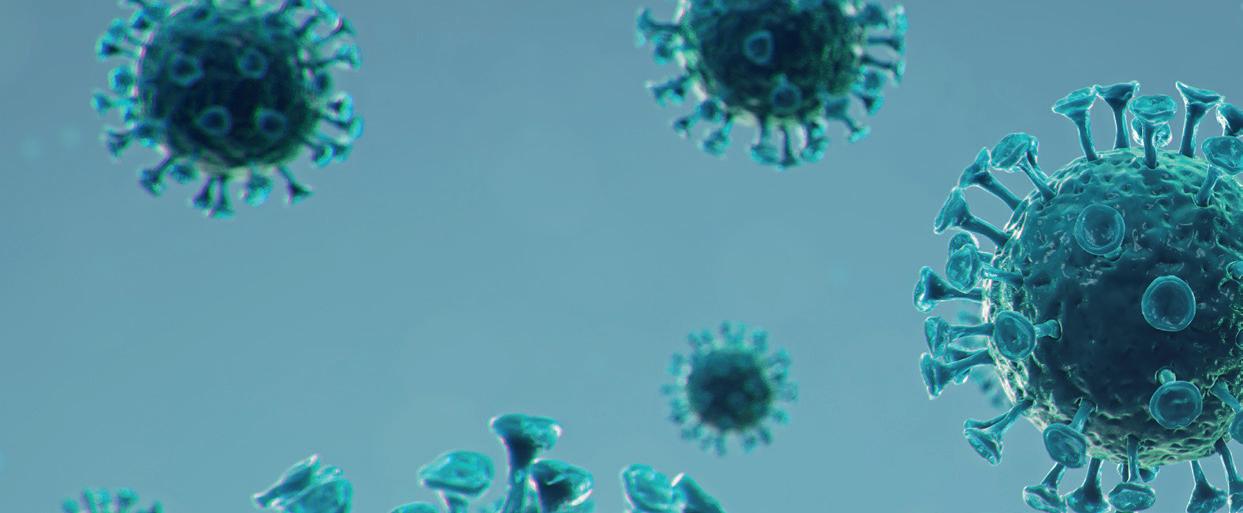
Costa Rica
Three are the available vaccines; at the beginning of April 2022, about 10.5 million doses have been applied. In 1998 the National Center for Pharmacovigilance was created, and in 2005, it was incorporated into the Ministry of Health of Costa Rica.
In response to the pandemic, a National Technical Labor Committee was created, composed of the Costa Rican Social Security Fund, the Ministry of Health (including the representation of the National Center for Pharmacovigilance), and Specialists, to identify possible risks that may be associated with vaccination against COVID-19. The COVID-19 vaccine surveillance scheme consists of the following elements:
• Spontaneous notification
• Risk Management Plans
• Monthly security reports
Spontaneous reports are collected through 4 main channels: a) Noti-Facedra: Regional Database, b) Yellow Card, c) CCSS Notification Form, and d) telephone line. In the period of 24 Dec. 2020 - 02 Apr. 2022, about 7 thousand notifications were recorded. The ISP also publishes periodic reports that include
CLINICAL RESEARCH & PHARMACOLOGY
statistics on the cases collected about severity, gender, age, nature of the event, and the number of reports per vaccine, among other elements.
Mexico
Eight vaccines are being applied; as of May 2022 cutoff, about 113.9 million doses have been used. Its National Pharmacovigilance Center was integrated into the national regulatory agency, COFEPRIS, in 2001.

Surveillance of COVID-19 vaccines is based on three pillars:
• Evaluation of notifications received
• Signal detection
• Risk Management Plan
Individual reports are collected through “e-Reporting vaccines,” “e-Reporting Industry,” “Vigiflow,” and the website “vacunacovid. gob.mx” for evaluation by the team of the National Center for Pharmacovigilance at COFEPRIS. This information is then shared in the WHO database, VigiBase. By the end of May 2022, around 38,000 notifications had been registered; from the notifications collected between December 2020 and
May 2022, a monthly report was published, including statistics regarding severity, gender, age, locality, and nature of the event. Access to the different reporting platforms is available on the COFEPRIS website.
As part of the activities of the regulatory agency, various health alerts have also been published to inform the population about the illegal sale and falsifications of COVID-19 vaccines.
https://www.gov.br/anvisa/pt-br/acessoainformacao/dadosabertos/informacoesanaliticas/notificacoes-de-farmacovigilancia
https://www.ispch.cl/isp-covid-19/informes-estadisticos-de-esavi-de-vacunas-sarscov-2/
https://www.ministeriodesalud.go.cr/index.php/biblioteca-de-archivos-left/ documentos-ministerio-de-salud/regulacion-de-la-salud/farmacovogilancia/ informe-de-sospecha-de-reacciones-adversas-a-medicamentos/informesacumulados-esavi-covid-19
https://www.gob.mx/salud/documentos/reporte-mensual-esavi-por-vacunacontra-covid19
https://www.gob.cl/coronavirus/
https://www.minsal.cl/wp-content/uploads/2020/12/ IMPLEMENTACI%C3%93N-DE-LA-FARMACOVIGILANCIA-PARA-vacunasSARS-Cov-2-VF.pdf
https://www.ispch.cl/noticia/isp-y-hospital-digital-realizan-encuesta-parapacientes-vacunados-por-covid-19-para-fortalecer-vigilancia-de-posibles-efectosadversos/
https://www.ispch.cl/isp-covid-19/informes-estadisticos-de-esavi-de-vacunas-sarscov-2/ https://twitter.com/ispch
https://www.notificacentroamerica.net
https://www.ministeriodesalud.go.cr/index.php/formularios-de-notificacion-rams https://www.ccss.sa.cr/web/coronavirus/assets/materiales/personal/ lineamientos/652.pdf
https://www.presidencia.go.cr/comunicados/tag/linea-telefonica-1322/
CLINICAL RESEARCH & PHARMACOLOGY
1. 2. 3. 4. 5. 6. 7. 8. 9. 10. 11. 12. 13. 14. Sources:
Mauro Orozco Moreno
Communicologist and Historian from the University of Guadalajara. Since 2019 he is dedicated to journalism and content creation about video games, technology and geek culture on the internet. Co-founder of the page Operación Gamer; currently his content appears on his page Totherland on Facebook Gaming.

Health and video games: truths, lies, and nuances

“We don’t stop playing because we get older; we get older because we stop playing,” Irish playwright George Bernard Shaw once said. Who, without giving it much thought, was the first person to win a Nobel Prize for Literature and an Oscar (the latter for Best Adapted Screenplay for the version of his novel Pygmalion.) Playing is usually associated with children because what corresponds to grownups is getting serious, working… and exercising.
Whether going to the gym, running in the mornings, or playing in the Sunday league with the office team, this physical activity keeps our bodies healthy. By releasing endorphins, our mind stays healthy as well. Today’s article will address the relationship between health and video games. Are all negative things said
about them false? Or, on the contrary, are they 100% something positive for health and society? Taking as an example the case of obesity, the situation is clear, and video games can lead us to very
64
GADGETS
severe sedentary states. This should be prevented by regulating playing times. Several European studies suggest that the ideal is to play around five hours a week, either distributed an hour a day or organized for the weekend. Although we must not forget that, although there is no way to go out to practice a sport or play in a park, games like Ring Fit Adventure or Just Dance are games that precisely require physical activity. The first is a title for Nintendo Switch that tries to advance levels by overcoming exercise routines using the joy-cons (console controls), and the second is a game that is released annually with an extensive playlist of songs that you will have to dance doing the movements that appear on the screen.
In the state of West Virginia in the United States, which is the state with the most severe childhood obesity problem in that country, a study of 50 overweight teenagers showed that playing half an hour a day to Dance Revolution (a popular game in the arcades similar to Just Dance) the boys lost an average of 2.7 kg, reducing risks of heart disease; meanwhile, those who used to have difficulties for the sport began to be more confident when practicing them. The problem with addiction to video games or violent behaviors for playing them, although it is a reality, it would be good to qualify it. And no medical studies confirm that the videogame could cause these problems, but it is possible that they can serve as a trigger.

If one takes care of the above, video games are ideal for exercising many parts of our brain, as it improves spatial
skills, our reflexes, and what is known as eye-hand coordination. Shooters like Call of Duty force us to make quick decisions, coordinate with our team and act under pressure; simulators like FIFA help us make our peripheral vision wider by being aware of the entire court.
Games with narrative value like Red Dead Redemption 2 encourage our creativity, not to mention masterpieces like Disco Elysium, in which not only is the story a masterful crime novel, but we make decisions within it. In the end, Bernard Shaw was perhaps a little right that “we grow old because we stop playing” and, as C. S. Lewis said, it would be good to lose the fear of looking childish, that the little jogging in the morning may look well accompanied by a Mario Kart race at night, make a farm in Minecraft and learn from Victorian London helping Marx save children from being exploited in a factory. In Assassin’s Creed Syndicate, according to the University of Iowa, all this can be a great brain gym in adults playing two or three hours a week.

65
GADGETS
Orígenes Romero
Degree in History from the University of Guadalajara. Former Paralympic athlete (2006-2017). Interested in the relationship between literature and history. Passionate about so-ccer literature. Content creator and literary analyst. Supporter of just causes.

What now?
With the massive COVID-19 vaccination campaign, we reach the socalled “new normal.” Humanity woke up one day in early 2020 turned into a Kafka’s character. After an uneasy dream, we have come back to life as Gregorio Samsa, questioning whether it is worth living in a world where smiles are blue folds of three layers; where we’ve lost loved ones, victims of the pandemic, and we’ve seen businesses go bankrupt.
During the days of confinement, in the field of culture, compelled re-readings of works such as The Plague, by Albert Camus or Decamerone, by Bocaccio, both located in contexts of health contingency, emerged. Giovanni Bocaccio’s story is particularly significant: ten young people seclude themselves on the outskirts of Florence to tell ten stories over ten nights, resulting in a hundred tales. Men and women in the freshness of their age gathered to sing, drink, and dance a few miles from a devastated city: that’s what art did during
the pandemic. Literature saved us then. And literature can save us now. Currently, a question is inevitable: Now what? How do we get back on the streets? In 1946, Austrian psychoanalyst Viktor Frankl asked himself the same question. His answer
was The Man in Search of Meaning, a work in which he recounted his experience as a prisoner in the concentration camps during World War II. Frankl took advantage of his experience with the human psyche to become a therapist for his peers at

66
BETWEEN
ART AND SCIENCE
Auschwitz and Dachau. For three years, Frankl witnessed, on one hand, suicides on the electrified fences; on the other, the resilience and patience of hundreds of people sentenced to Nazi torture. Faced with this proof of strength, he wondered what allowed his survival in the most unexpected situation: to give a superior sense of his existence, a direction to take the steps.
For many of those confined in concentration camps, this course was to
meet their families once the conflict was over. Frankl then set out to assist his peers in finding the meaning of their lives: to create a reason why it would be worth going through that suffering alive.
Today rereading Frank can help us out of lockdown. Physical confinement can become a mental cloister. Let literature save us once again.

67
ENTRE EL
ARTE Y LA CIENCIA

Of whatever comes from me, of what barely as a tidal wave as a tongue of salt like oyster eyes siren song in the net of the fisherman without hunger.
Of whatever comes from me, of what is curled up like snails as a reflection of the moon as a wave fragment starfish without a sky.

Of whatever comes from me, of what he murmurs as undone foam as a back-and-forth that grows as a desire to burst in wave alone, without sand or sea or anything. Of what comes from me, not from others, just come, go, and stay.
Writer, workshop, manager, and cultural promoter of national and international writers. Her texts have been published in anthologies and magazines in Mexico, Latin America, and Europe, where she has been translated into English, Italian, Nahuatl, and Galician, as well as in the Dictionary of Women Writers 2018 and the Encyclopedia of Writers of Jalisco 2020, coordinated by the renowned doctor and researcher Silvia Quezada.
 Guadalajara, Jalisco
Guadalajara, Jalisco
69
Rossana Camarena
Nothing
Dr. Marie, Deuterium! I've discovered something very important!
Bobert here, we are working on some medical samples.
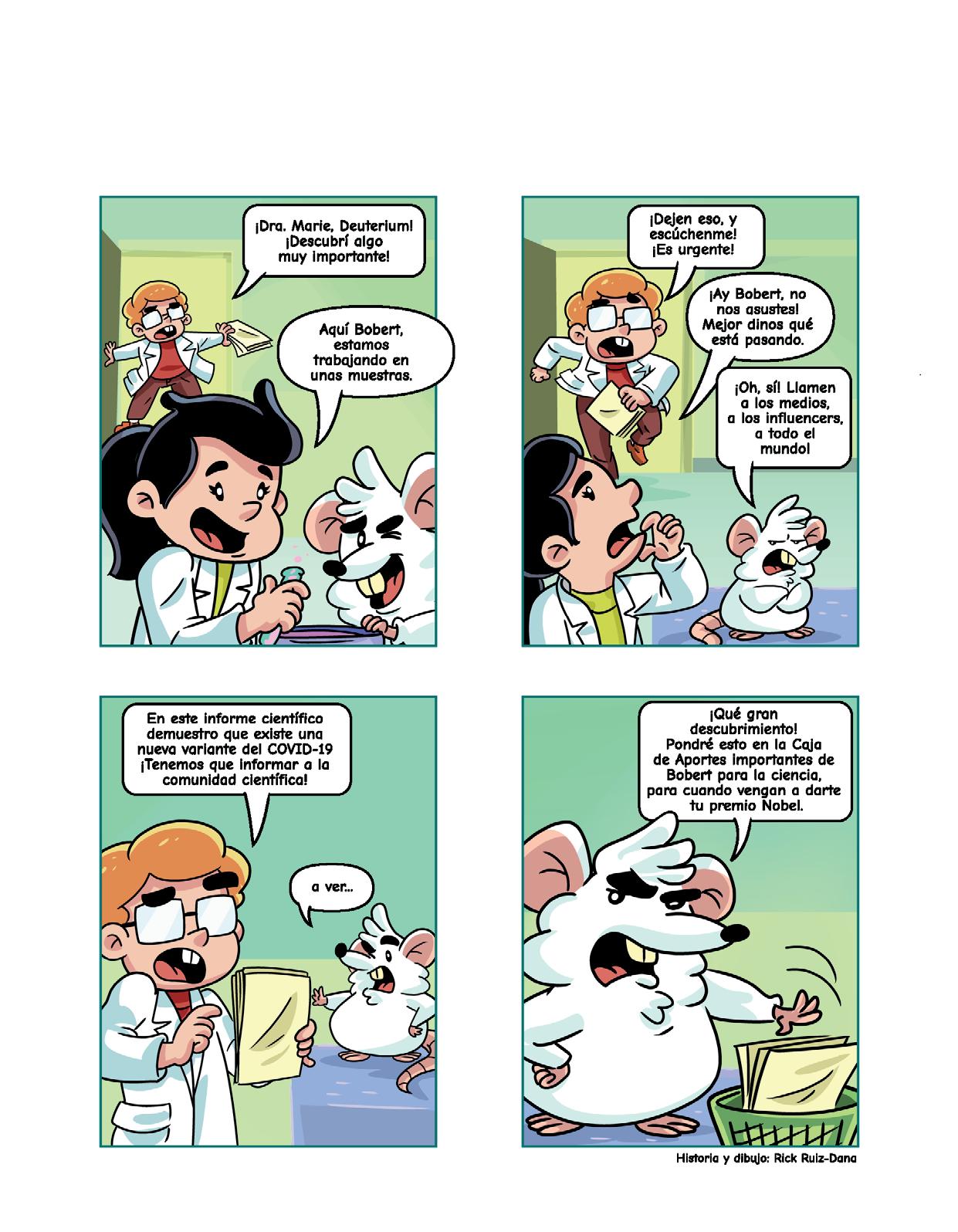
Stop that and listen to me! It's urgent!
Oh Bobert, don't scare us! You'd better tell us what's going on.
Oh yes, call the media, call the influencers, call everyone!
In this scientific report I show that there is a new variant of COVID-19 We have to inform the scientific community!
What a great discovery! I'll put this in Bobert's Important Contributions to Science Box for when they come to give you your Nobel Prize.
Let's see...
Historia y dibujo: Rick Ruiz-Dana
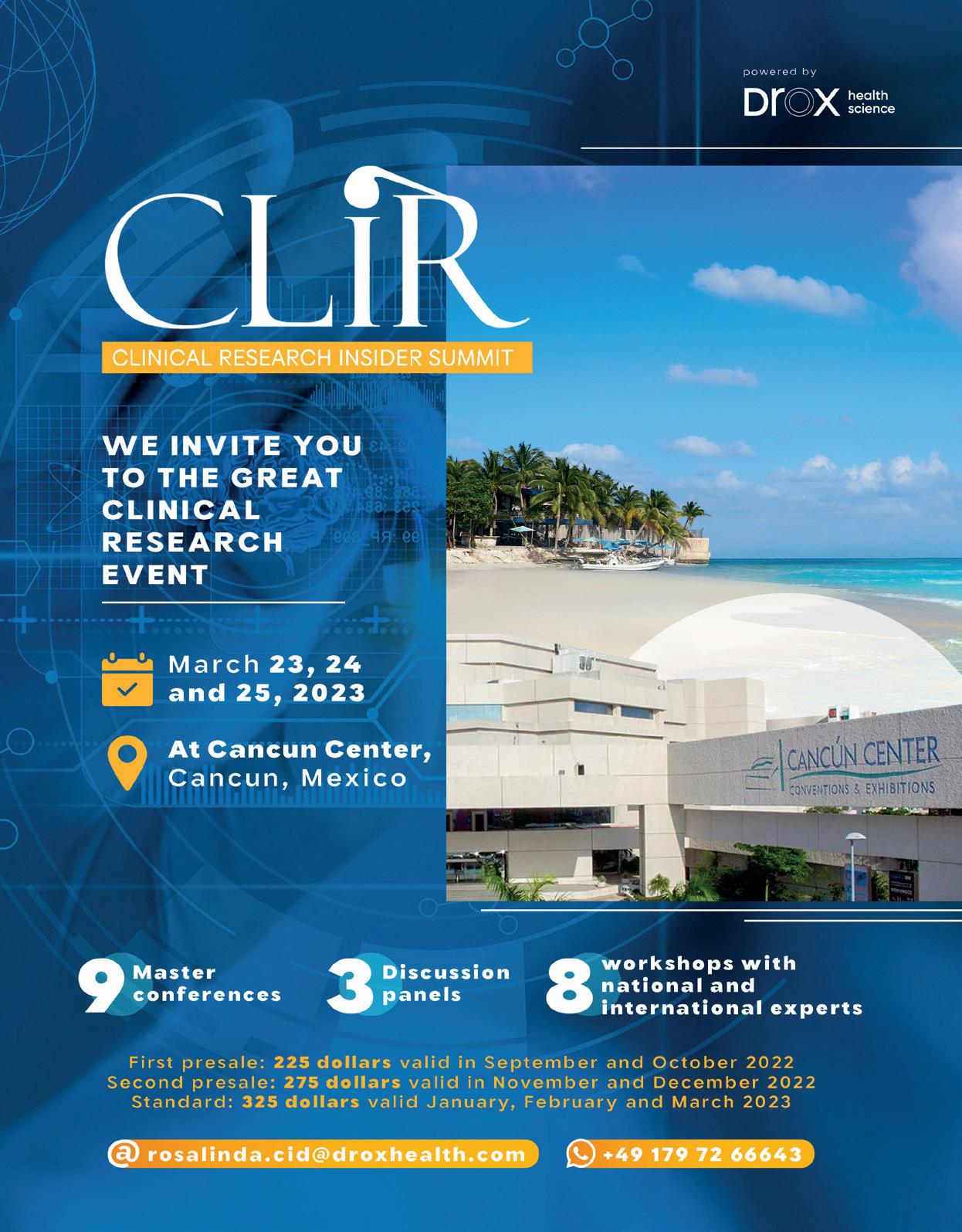



72 At CidVID Servicios Médicos we offer the following services: The best medicine is Prevention Clinical studies Medical certificates Studies interpretation Rapid tests Minor sutures Electrocardiograms Blood pressure measurement Vital signs measurement Ear washing Glucose test Wound cleaning Intravenous muscular drug administration Pap smear General medical consultation only $60 .00 400 and over Clinical Studies Volcán Popocatépetl #4571 Col. el Colli Urbano. T. 33 2002 8697 Ext.301 Av. Insurgentes Sur #662–PB Col. del Valle, Benito Juárez. T. 55 8983 6795 Av. Universidad #412 PB Col. San Cayetano. T. 449 551 0900 cidvidsm.com.mx COVID Testing PCR Testing Antigens






















 Writing by PhD
Claudia Mejía Morales,
Writing by PhD
Claudia Mejía Morales,



































































 Guadalajara, Jalisco
Guadalajara, Jalisco


























